







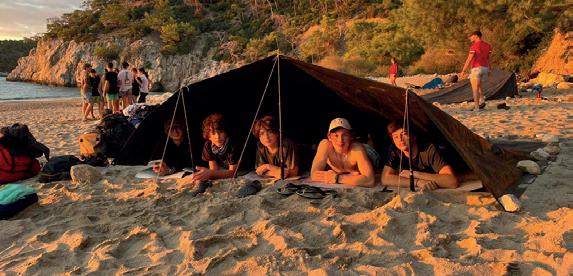


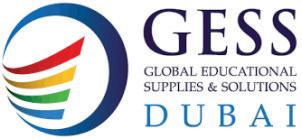



THE MAGAZINE FOR INTERNATIONAL EDUCATORS IN PARTNERSHIP WITH International SCHOOL MAGAZINE Spring 2024 | schoolmanagementplus.com MANAGEMENT plus SCHOOL PART OF ADMISSIONS GOVERNORS FINANCE HEADS DEVELOPMENT The Importance of Resilience

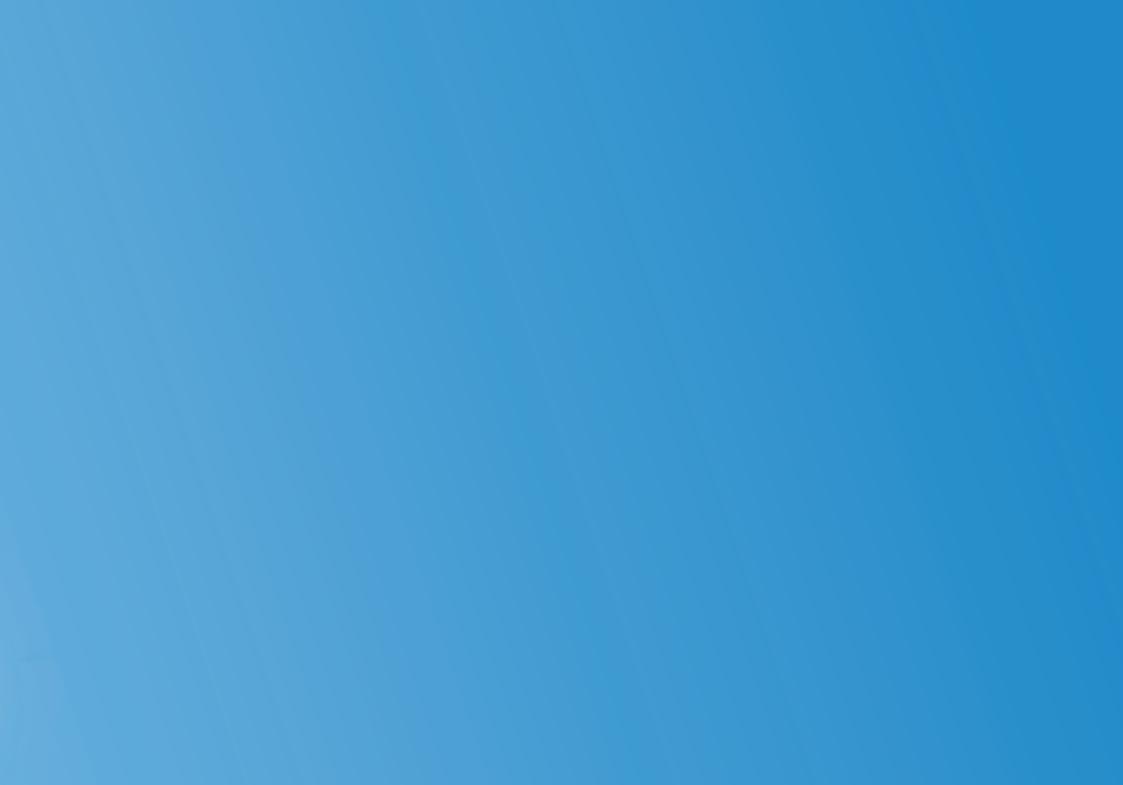





Support students' emotional wellbeing with ebooks and audiobooks
It has never been easier to give students a way to discover their love of reading. Give your school the power to deliver the right books to every student with the award-winning Sora digital reading platform.
With Sora, you can handpick titles from the industry's best catalogue of ebooks and audiobooks for students at every grade level and across all subjects to meet their reading and learning needs.
And it’s 100% digital. So books can be read anytime, anywhere, on every device.

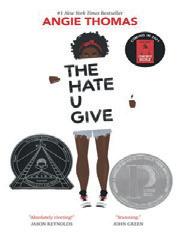




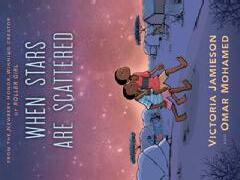

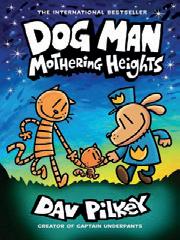








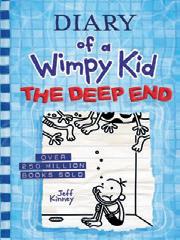




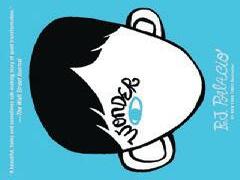


Visit DiscoverSora.com/global to see why over 61,000 schools have partnered with Sora.



Mary Hayden
Jeff Thompson editor@is-mag.com www.is-mag.com
Steve Spriggs steve@williamclarence.com
259241 bryony.morris@fellowsmedia.com
Jacob Holmes
jacob.holmes@fellowsmedia.com 01242 259249




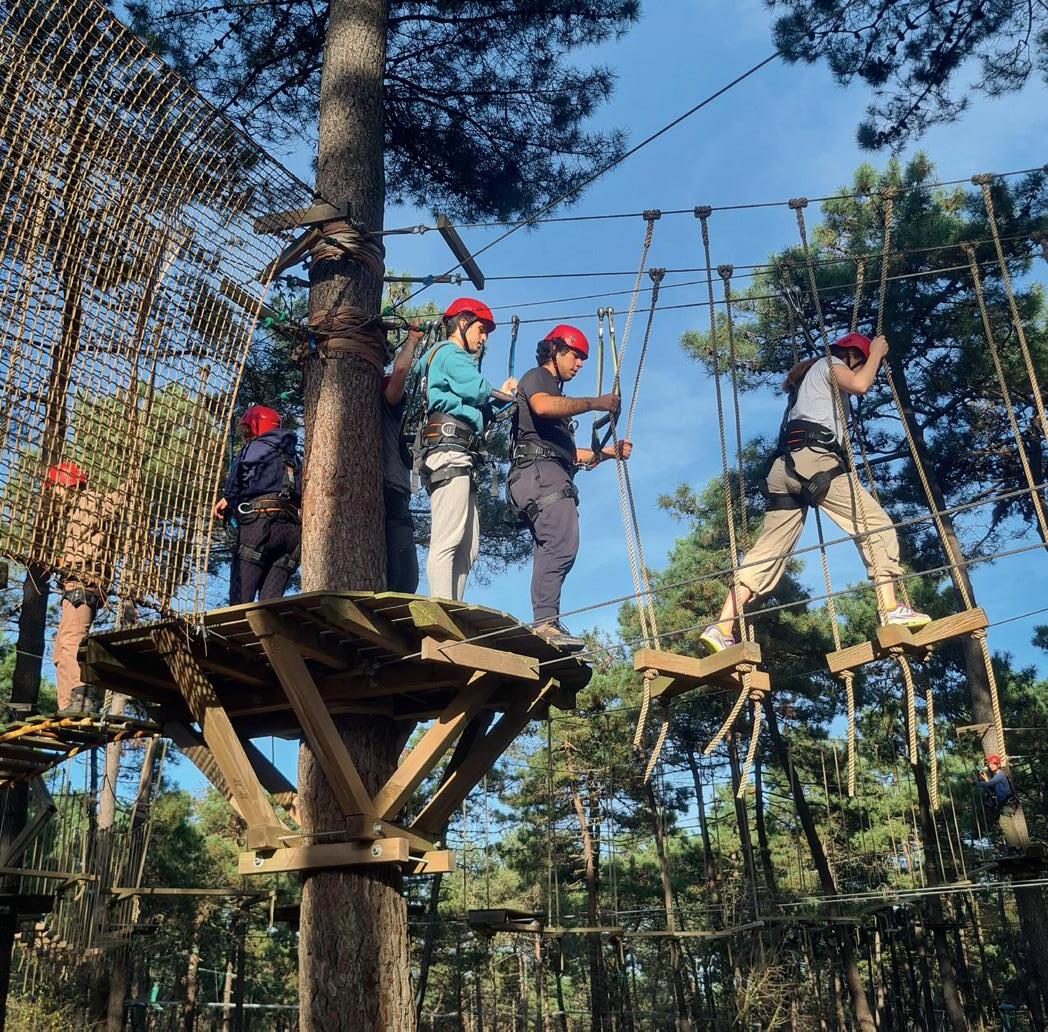
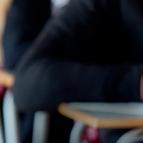


















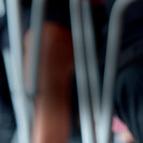

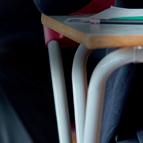


Contents 22 Intelligence on Demand. How AI Challenges Educators Paul Juscha From the Schools 26 Educated and Educators International School of Billund 32 Navigating Motherhood in an International School: Striking a Balance amid Cultural Differences Heather Meyer and Hailey Meyer 34 The Importance of Resilience Kieran Pearson 36 Beyond Character Education: Integrating Skills from the Inner Development Goals into the English Classroom Allison Finn Yemez Book review 39 Teachers! How Not to Kill the Spirit in Your ADHD Kids. Instead, Understand their Brains and Turbo-charge our Future Leaders & Winners. By Sarah Templeton Reviewed by Sally Hewlett 5 Changing Times and Moving On Mary Hayden and Jeff Thompson Features 6 What’s in a Name? ‘Artificial Intelligence’ is a contentious term and its future in international schools should be too Callum Philbin 9 A Plea for Courage in International Education Leadership Stephen Codrington 12 Creating a Culture of Professional Growth and Inquiry Ann Lautrette Leading, Teaching and Learning 14 Building Successful School Culture Part 2: The School Professional Culture Arena George Scorgie 16 Reflections on Learning and Teaching: Who Are School Assessments Really For? Cherry Atkinson 19 Resisting the ‘Best Possible Self’ Narrative Within a Teacher Education Programme Natalie Shaw On the Cover The Importance of Resilience Kieran Pearson Page 34 34 The Importance of Resilience 16 Reflections on Learning and Teaching THE MAGAZINE FOR INTERNATIONAL EDUCATORS EDITORS
DIRECTOR
MANAGING
& PRINT
Media Ltd
ADVERTISING
DESIGN
Fellows
The Gallery, Southam Lane, Cheltenham GL52 3PB 01242
part of this publication may be reproduced, copied or transmitted in any form or by any means. International School is an independent magazine. The views expressed in signed articles do not necessarily represent those of the magazine. The magazine cannot accept any responsibility for products and services advertised within it. Part of the Independent School Management Plus Group schoolmanagementplus.com Spring 2024 International School 36 Beyond Character Education Spring 2024 | International School | 3
No



CPSQ Measure what matters for academic success
For students aged 14 to 19

The Cambridge Personal Styles Questionnaire (CPSQ) provides insight into how students approach tasks and relate to others: their ‘personal styles’. Research has found these styles contribute to educational progress and work effectiveness.
Instant insight
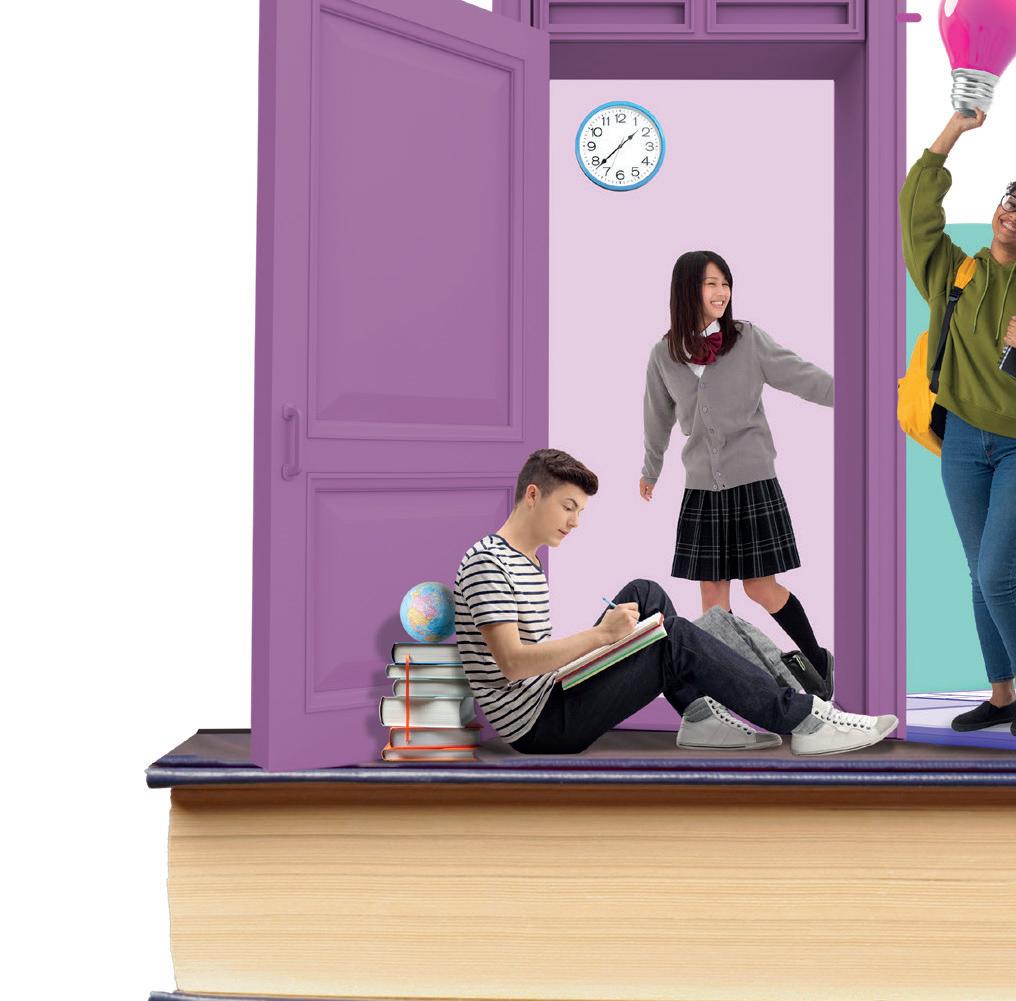







Gain invaluable understanding of your students in just one lesson.

Focus and tailor
Personalise student mentoring programmes.

See a more holistic picture
Get additional context to students’ academic performance.

Build students’ self-awareness
Motivate student interest in personal development.
www.cem.org/cpsq

Understand hidden barriers
Identify students in need of extra support.

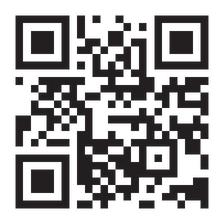
Scan for more information
Special
Changing Times and Moving On
Mary Hayden and Je Thompson
In the ten years since we began editing International School magazine, with William Clarence from 2020 and for the previous seven years with John Catt Educational, the international school context in which the magazine is set has seen many changes: not only in number, but notably in nature. Ten years ago, it was becoming clear that the growth in this sector was not only due to an increase in numbers of international schools of the type with which many had previously been familiar: largely catering for globally-mobile expatriate professional families for whom schools in the national system to which they temporarily relocated were not suitable for their children (often for reasons of language). As was becoming increasingly evident the growth was also, and perhaps majorly, in numbers of a different type of international school all together: those intended for the children of host country national families for whom, in some contexts, an English-medium education leading to internationallyrecognised pre-university qualifications could be perceived as providing a competitive edge, and a potential passport to prestigious western universities and well-remunerated employment in the global labour market.
The oft-cited ISC Research (2018) statistic of a shift from 1989 – when international school student populations constituted approximately 80% expatriates and 20% host country nationals – to a complete aboutturn by 2018 provides a clear illustration of just how much the sector has been changing, with more recent growth appearing to continue in the same direction. Our own proposal in 2013 of a rather unimaginatively labelled A, B, C categorisation of international schools (‘traditional’ schools catering for expatriates, ideologically-
...we wish to express our gratitude to all we have worked with for their encouragement and support
driven schools such as the United World Colleges, and more recently emerging schools catering for host country nationals respectively) was out of date almost as soon as it was published, with further subsets of types arising in the short period since. The so-called Chinese ‘internationalised’ schools, and the ‘satellite’ schools/ colleges appearing around the world as off-shoots of prestigious and well-established schools particularly in the UK and North America, are just two of the new and interesting forms of international school in this increasingly recognised form of education, which has also spawned
a new field of educational research.


Reference

No less significant has been the changing wider context in which international schools operate. In just ten years there have been enormous changes in the range of issues to which international schools are needing to respond, including but not limited to the climate emergency, the impact of colonisation and moves to decolonise the education process, increased tensions and war in a number of flashpoints globally, mass immigration, huge growth in the use of social media, the very notion of truth and its representation – and, not least, the opportunities and threats presented by Artificial Intelligence.




As our time as joint editors of International School comes to an end, with the decision by William Clarence to take the magazine forward in a different format, we wish to express our gratitude to all we have worked with for their encouragement and support over the past decade. Throughout the shifting sands of those years, we have been privileged to work with large numbers of international school teachers, leaders and others with interests in this area who have been willing to share examples of good practice, ideas for change, reflections on the challenges of the day, and provocative proposals to stimulate debate, as well as providing helpful feedback and suggestions. It has also been our pleasure to work with publishing colleagues who have brought their expertise to the production of a high quality and attractive publication that encourages readers to take time to learn from the ideas and experiences of others. We are confident that International School in its new iteration will continue to attract high quality articles from teachers and leaders in international schools worldwide. As we move forward into increasingly uncertain times, the sharing of ideas and providing of mutual support for those facing similar challenges will be no less important than it has been to date. We wish our colleagues at William Clarence every success in the development of International School as a forum for the sharing of ideas, discussion and debate in this important context. ◆
• ISC Research (2018) International School Market Research and Trends. Faringdon: ISC Research.
• Hayden M C and J J Thompson (2013) International Schools: antecedents, current issues and metaphors for the future, in R Pearce (ed) International Education and Schools: moving beyond the first 40 years, London: Bloomsbury Academic.
Special
Spring 2024 | International School | 5
What’s in a name?
‘Artificial Intelligence’ is a contentious term, and its future in international schools should be too
By Callum Philbin
International schools are bringing in responsive use policies around ‘Artificial Intelligence’ faster than ChatGPT can write a student’s essay or the teacher’s feedback. But you don’t need a largelanguage model (LLM) to produce homogenous platitudes; schools are lining up to present policies and frameworks that all use similar rhetoric: AI can enhance teaching and learning, we have serious misgivings, but you lead and we follow because what else can we do?
None of this is to dismiss the difficult circumstances that students, teachers and school leaders find themselves in. LLM-based technologies do challenge our education systems and ask fundamental questions of what we do as educators inside and outside of the classroom. Fundamental questions that require our leadership, like: what is intelligence? When we tease out a question like that, we might not feel as comfortable describing the current manifestations of ‘generative-AI’ in our school policies as ‘intelligent’, or even ‘artificial’ for that matter.
The concept of artificial beings with intelligence or consciousness has existed in human culture for thousands of years across various mythologies. However, our contemporary use of the term originates from computer scientist John McCarthy’s 1956 summer school in Dartmouth College, USA (Council of Europe, 2023). He developed the term to distance himself from Norbert Weiner’s neologism of ‘cybernetics’ because, as anyone familiar with academia knows, pettiness between researchers is boundless, and a new showy term is a great way to get funding. Fast forward through AI summers and winters (periods when researchers get funding and periods when they don’t) to our
contemporary moment of advances in robotics, speech and facial recognition, and natural language processing. The techniques and algorithms that led to developments in machine learning and deep learning for these breakthroughs in the 2010s didn’t come from new ‘changemakers’ and ‘thought leaders’, but from research in the 1980s, the change being that companies now had massive amounts of data to draw from based on the prevalent surveillance model of many modern technology companies, as well as the new infrastructure (data centers) to process it (Crawford, 2021). The advent of LLMs is
just as debatable. Human intelligence is a vast and complex concept, whereas the ‘intelligence’ in AI is premised on statistical logic reinforced with human training. The original conception of AI from McCarthy viewed computers as like minds, and vice versa. If you read Freud, you will see him comparing humans to steam engines. The problem is bodies are not steam engines, and minds are not computers. Intelligence has many definitions to capture its complexity, but it usually encompasses emotional understanding. The truth is that ‘artificial intelligence’ is nothing like human intelligence. This is not to say pattern-
Educators are the true disruptors.
The future of our planet depends on that...
a part of this story, the technology behind the sub-field of ‘generative-AI’, software that creates text, images and computer code that mimic some human capabilities (Visual Storytelling Team and Murgia, 2023).
Of course, LLMs find patterns and present text to mimic human capabilities based on data appropriated from real human beings. Writers, artists, musicians, academics, and other professionals and creatives have produced text from their own labour that is then offered to users of LLMs through the statistical, pattern-finding machine (some trained with outsourced labour in Kenya at less than $2 dollars an hour). ‘Non-artificial’ or ‘pattern-matching’ intelligence does not have the same mysticism, but it is at least accurate. The ‘intelligence’ part is
matching and statistical prediction are not useful. It is to say that the term has a shaky premise and brings idealised notions that can hide what it does and its ramifications for the world. Thankfully, international educators have a deep understanding of the complexities of intelligence, and they are well represented in the focus on a strengths-based model within the growing neurodiversity movement.
The use of algorithms is not a new phenomenon in international education. When the International Baccalaureate cancelled its final examinations because of the pandemic, algorithms were used to ‘predict’ results (Asher-Schapiro, 2020) with at best … mixed results. Teacher-estimated grades, student assignment scores and historical results were fed into an opaque
6 | International School | Spring 2024 Features

statistical formula to determine final grades for students. Gulson et al’s Algorithms of Education (2022) offers an extensive overview of how algorithms and AI have transformed educational governance around the world through datafication, the process of ascertaining quantitative data about students to measure educational outcomes. New modes of seeing, but also new modes of educational accountability and, at times, performativity. All conversations about AI use in schools need to begin with transparent and difficult conversations about how algorithms are used in the present.
None of these criticisms are to say that new technologies should not be used at all. The value of creating opportunities for inclusive learning through augmentative communication tools or for tailoring content for individual needs and abilities is clear. But to explore how (and when and why) we use pattern-matching software or other forms of machine learning or deep learning, we need to start by confronting the AI hype and offering our own vision for the future, not the one offered by ‘Open for business AI’. Starting with the technology and its role in enhancing learning would be the wrong place to start; better to begin with what we want to develop as educators, and how we can confront our global challenges.
Stephen Taylor’s article in the Summer 2023 edition of this magazine called on educators and students to be ‘explorers’, but from the common techno-optimist
premise that an ‘AI future’ equals human progress in efficiency, economic growth and well-being (p35). He acknowledges ‘challenges’, but the more dystopian concerns of AI being contrary to human values seem to be missing. I would rather we were ‘leaders’ instead of ‘explorers’, challenging the narratives around AI and reimagining what schools can be with our own vision for transforming the world.
Mark Weiser wrote that ‘the most profound technologies are those that disappear. They weave themselves into the fabric of everyday life until they are indistinguishable from it’ (1991). As international educators we should confront the deception of the name AI and its premise before these technologies disappear into the realities of our schools.
Educators are the true disruptors. The future of our planet depends on that: whether it be confronting inequalities, war or climate change. Leave tech visionaries to disrupt everything except the market and our deep global inequities. Let’s ask uncomfortable questions about if, and if so to what extent, we want to embed technologies in the classroom. Let’s work with students, and together play a leading role in the future of international schools, which will probably have less to do with technological integration, and more to do with the major societal transformations necessary for a sustainable future. Let’s demystify AI, see it as contentious and, as educators, seize our own vision for the future. ◆
References
• Asher-Schapiro A (2020) Global Exam Grading Algorithm Under Fire for Suspected Bias. Reuters. Available at: https://www.reuters.com/article/usglobal-tech-education-analysis-trfn/global-examgrading-algorithm-under-fire-for-suspected-biasidUSKCN24M29L
• Council of Europe (2024) History of Artificial Intelligence. Available at: https://www.coe.int/en/ web/artificial-intelligence/history-of-ai
• Crawford K (2022) Atlas of AI. New Haven, CT: Yale University Press.
• Gulson K N, Sellar S and Webb P T (2022) Algorithms of Education. How Datafication and Artificial Intelligence Shape Policy. Minneapolis: University of Minnesota Press.
• Taylor S (2023) AI in Education: We are all Explorers. International School. Summer 23 Edition. Available at: https://www. schoolmanagementplus.com/publications/ international-school-magazine/internationalschool-magazine-summer-2023/
• Visual Storytelling Team and Murgia M (2023) Generative AI Exists Because of the Transformer. Financial Times. 12 September 2023. Available at: https://ig.ft.com/generative-ai/
• Weiser M (1991) The Computer for the 21st Century. Scientific American. 265(3): 94. Available from: https://www.scientificamerican.com/ article/the-computer-for-the-21st-century/
Dr Callum Philbin is a Lecturer and Researcher in International Education with International Teacher Education, NHL Stenden University of Applied Sciences in The Netherlands.
✉ callum.philbin@gmail.com
Spring 2024 | International School | 7
Safer School, Better Behaviour
With CPI training you can:
Empower educators
Support student success
Promote emotional wellbeing
Improve behaviour response
Scan or click QR Code to learn more about our training programmes.
Classroom Culture™ Training
Verbal Intervention™ Training
Breaking Up Fights™ Training
Safety Intervention™ Training
Schedule a conversation with a CPI representative today to learn how you can build a positive school climate.
Phone: + 44 (0) 161 929 9777
Email: C ContactUs@crisisprevention.com









8 | International School | Spring 2024 Features
FOLLOW US ON CPI International Headquarters Building 2 Brooklands Place • Brooklands Road • Sale • Manchester • M33 3SD • United Kingdom © 2024 CPI. All rights reserved. pivotal behaviour training
A Plea for Courage in International Education Leadership
by Stephen Codrington
For at least 2,500 years, courage has been seen as a virtue. The ancient Chinese philosopher Lao Tzu is said to have written ‘Because of great love, one is courageous’. At about the same time, the famous Greek philosopher, Aristotle, viewed courage as the marker of moral excellence, noting that it was the virtue which moderates our instincts toward recklessness on one hand and cowardice on the other. Aristotle believed that a courageous person fears only those things that are worthy of fear. In other words, courage means discerning and thus knowing what to fear, and then responding appropriately to that fear.
The brilliant British TV comedy series ‘Yes Minister’ took a different, much more pragmatic and cynical view of courage. When Sir Humphrey Appleby (as Permanent Secretary for the Department of Administrative Affairs) thought his minister was about to make a big error, he would raise one eyebrow and say ‘that would be a courageous decision, minister’. In Sir Humphrey Appleby’s world, courage was not a virtue; it was a severe risk.
It seems that courage may be going out of fashion in international education. At face value, schools seemed far more innovative and open to courageous experimentation in the 1960s, 1970s

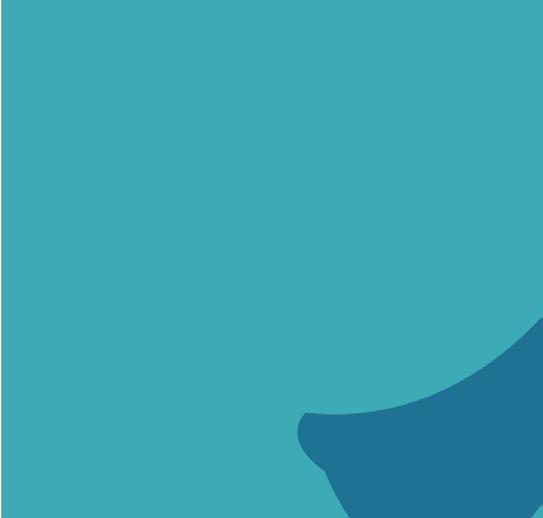

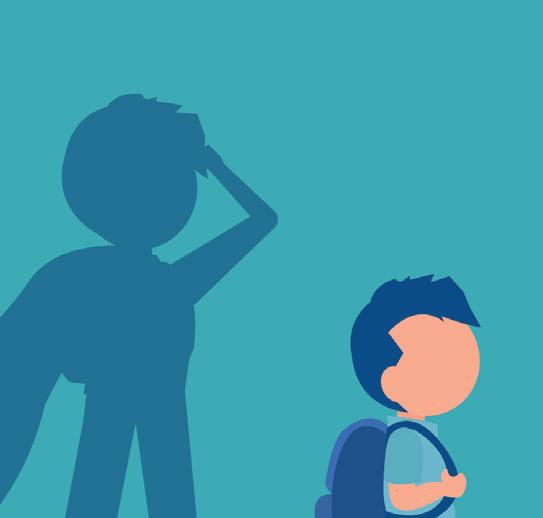
and 1980s. These days the general rule seems to be to play safe, achieving the often-mediocre outcomes set by external bureaucrats which are measured by standardised testing and dreary, excessively quantitative questionnaires whose principal justification is so-called ‘accountability’. At its best, international school accreditation has the potential to encourage creativity, and yet according to many school leaders with whom I work, it more commonly seems to direct schools towards risk-averse conservative compliance that is more directed to please lawyers than parents, students, and teachers.
Of course, courage should not be reckless; it needs to be based on sound research and experience. One of my ‘heroes’ in education is the brilliant German educator, Kurt Hahn, who was instrumental in establishing the United World Colleges, the Duke of Edinburgh Award, Outward Bound, Round Square, Gordonstoun School in Scotland, Schule Schloss Salem in Germany (in partnership with Prince Max von Baden) and, indirectly, the International Baccalaureate (IB).
In a speech in 1965, Kurt Hahn spoke about achieving the right balance between sound experience and experimentation in these words: ‘To make my






Spring 2024 | International School | 9 Features
▲
meaning clearer I will recall a conversation, which the late founder – the real founder of the Salem School –Prince Max of Baden had with a visitor. His enthusiastic guest asked him the following question: ‘what are you proudest of in your beautiful schools?’ He said, ‘I am proudest of the fact that if you go the length and breadth of the schools, you will find nothing original in them. It is stolen from everywhere, from the British public schools (you call them private schools), from the Boy Scouts, from Plato, from Goethe’. Then the enthusiastic guest turned to him and said, ‘But oughtn’t you to aim at being original?’ Then Prince Max rather abruptly answered, ‘Well, you know, it is in education like in medicine, you must harvest the wisdom of the thousand years. If you ever came across a surgeon who wants to take out your appendix in the most original manner possible, I would strongly advise you to go to another surgeon.’ (From Kurt Hahn’s Address at the Founding Day Ceremony of the Athenian School, 21 November 1965 Danville, California).
One of Kurt Hahn’s (many) enduring legacies is the global network of 18 United World Colleges (UWCs), regarded by many as the gold standard of international education today. The UWC movement was established in 1962 with the opening of Atlantic College in Wales, initially to build peace at the height of the Cold War by bringing together 16-18 year olds from around the world (and from both sides of the Iron Curtain) to live together and study together, and to build bridges of understanding. The concept was arguably more than courageous – it was audacious! The selection of students was (and still is) conducted on the basis of merit, with the majority receiving either full or partial scholarships raised through National Committees worldwide.
It is difficult to find at work today examples of the type of courage that established the UWCs – the courage to build a world-wide network of schools based on a set of philosophical ideals, independent of students’ ability to pay. There are rare exceptions, and their rarity makes them notable. For example, a remarkable multicultural school where I serve as Board Chair, Djarragun College in Australia, was established more recently according to an altruistic philosophy not unlike that of the UWCs. Seeking to overcome discrimination, lack of opportunity, disempowerment, unemployment and erosion of culture, the school provides subsidised education for disadvantaged Australian Aboriginal and Torres Strait Islander students from some 55 different First Nations. Many of these students have no alternative access to education because of their remote location, poverty, family situations, violence or, quite commonly, a combination of several (or all) of these factors.
For me as an educator, it is disappointing that schools such as the United World Colleges or Djarragun College are such rare exceptions in today’s educational world. In my eyes, they are role models for what international education should be – visionary, courage-based, beacons of hope and opportunity that transform young lives and their communities.
Literature suggests that courage is required of soldiers, athletes, corporate leaders, and (notwithstanding Sir Humphrey Appleby’s machinations) a few rare politicians. However, courage is rarely mentioned as a positive attribute of school leaders or their governing boards. This seems to be an absurd omission. It is hard to imagine any school leader or board getting through a month, let alone a year, without having to make decisions that

...by playing it safe, by unconsciously giving away our power, by dimming our radiance, by not recognising there is always so much more waiting for us on the other side of fear’.
Features

demand courage. More often than not, however, such decision-making requires the courage to make important but necessary decisions that will distress some constituents. In some extreme cases (which are increasing in frequency in some places), it may include the courage to deal with physical violence, verbal attacks, character assassination, social media rumour-mongering, or direct challenges to the school’s essential mission, purpose or identity. In the context of the host societies in which international schools operate, courage for school leaders and boards may also include standing up to societal pressures when these conflict with the school’s firm values position or mission.
It also takes immense courage to be humble, especially in multicultural environments where values and practices may conflict. This is especially so for those who lead international schools as they must find the courage to admit that they are not always right. Similarly, it takes courage for school board members to admit that they can’t always anticipate every possibility, that they can’t solve every problem, that they can’t control every variable, that they can’t always be congenial, and that they will make mistakes. It takes courage to admit these things to others, and even more courage to admit them to yourself.
In a 2020 article for Harvard Business School, Matt Gavin wrote ‘A deep and abiding sense of courage is a quality that separates good leaders from great ones. Research shows that professionals who demonstrate courage in the workplace not only perform at a higher level, but influence their peers to act with bravery and drive organizational success’. In my mind, this highlights the importance of school leaders and boards working effectively in close, creative, courageous partnership. Neither the United World Colleges nor Djarragun College could ever have become successful without close working relationships between governance and management, working together towards shared, unified goals with the courage to stay focussed on achieving their ambitious goals in the face of significant obstacles and powerful opposition.
Of course, irrespective of the amount of courage an individual possesses, not everyone is in the position of courageously starting an international network of schools or a school which focuses on closing the gap between Indigenous and Non-Indigenous communities. How, then, should a school leader (and the board) exercise courage as they guide the everyday operations of a typical international school? Some suggestions are as follows:
1. Lead passionately by example
Leaders are people that others follow. People follow leaders they respect, and respect flows from ‘walking the talk’. In other words, staff and students respect those who show servant leadership by only asking
others to do what they would be prepared to do themselves. Leading by example also requires passion if the leadership is to be effective. Passion flows easily when someone is committed to their objectives and believes sincerely in their importance. It follows from this that authenticity is required to lead by example and exude infectious passion.
2. Think strategically
Every action taken in a school – courageous or not – should be strategically coherent in enhancing the school’s mission (enduring purpose), vision (strategic priorities) and values (ethical position). A missiondriven strategic plan provides an excellent foundation for coherent, focussed, courageous decision-making.
3. Take ‘acceptable’ risks
The word ‘acceptable’ is not intended to be a weasel word here. Different school communities, school leaders and school boards vary in their risk appetites, whether the risk is financial, strategic, operational or philosophical. Courage means taking well-considered actions right up to the limit of risk acceptability, but not beyond – that is what is meant by ‘acceptable’ risks.
I love a quote by the US writer, Elaine Welteroth, in her 2019 book More than Enough: ‘I realised that if we aren’t vigilant, we can move through our entire lives feeling smaller than we actually are – by playing it safe, by unconsciously giving away our power, by dimming our radiance, by not recognising there is always so much more waiting for us on the other side of fear’. Those words – living on the other side of fear – would be a great motto for international school leaders and their boards as they work together to chart an exciting strategically-focussed future for the school in a way that honours its history, mission, purpose, vision, values, ethos, and philosophy. Courage is a not a legal requirement of school leadership or board governance, but it is an immense help in making leadership and governance more effective. ◆
References
•Gavin M (2020) 3 Examples of Courageous Leaders & Lessons You Can Learn from Them. Harvard Business School Online. 10 March 2020. Available from https://online.hbs.edu/blog/post/ courageous-leaders
• Welteroth E (2019) More Than Enough: Claiming Space for Who You Are (No Matter What They Say). London: Ebury Press.
Stephen Codrington is Founder and President of Optimal School Governance, a specialist consultancy that supports school leaders and boards globally. He previously served as the Head of five IB schools in four countries over a period of 25 years.
✉ stephen@optimalschool.com
Spring 2024 | International School | 11 Features
Creating a Culture of Professional Growth and Inquiry
by Ann Lautrette
One of the simultaneous joys and frustrations of the teaching profession is that no-one really has the answer to what makes a perfect lesson, or what change will suddenly make every student reach their potential. There are many theories, and there are many professional development opportunities for teachers and schools on the hunt for that particular holy grail. Educational researchers, consultants and gurus bring much to understanding what makes great teaching and learning, but many teachers have a sense that these people are no longer really in the classroom, and are not under immediate pressure to bring the best out of themselves and their students in the face of a rapidly changing and increasingly unstable world.
Schools can take many approaches to professional development for teachers: from a top-down ‘we’re bringing in such and such an expert this week’, to a selfdesigned ‘I’m going to go on this course because I’m interested in x’ model. Both of these extremes, however, rely on an individual teacher learning something new, implementing a change in their practice, evaluating thoroughly the impact of that change, and determining whether to stick or twist. All with no real time to do it.
Practically, what happens is that a new initiative is touted by leadership or by an expert on a professional development day, teachers either roll their eyes and catch up on emails, or get excited in the moment, endeavour to try something new in their classroom on Monday, and forget all about it as soon as little Jonathan starts underlining his titles without a ruler …. again. Or, maybe the latest golden nugget makes it into the teacher’s practice and embeds itself there with no real evaluation of any data which shows if it is actually making a difference. Meaningful professional development starts with teachers themselves, but requires a strategic approach to creating a learning culture where teachers are safe to hypothesise, experiment, measure success, reflect, evaluate and plan new change. This cyclical professional inquiry model takes some time to build but results in rich conversations amongst colleagues, ownership of professional growth and development, and direct impact on student learning.
In Action – Context
Imagine a secondary school where the main strategic focus is assessment; specifically moving towards a culture where its students can be said to be
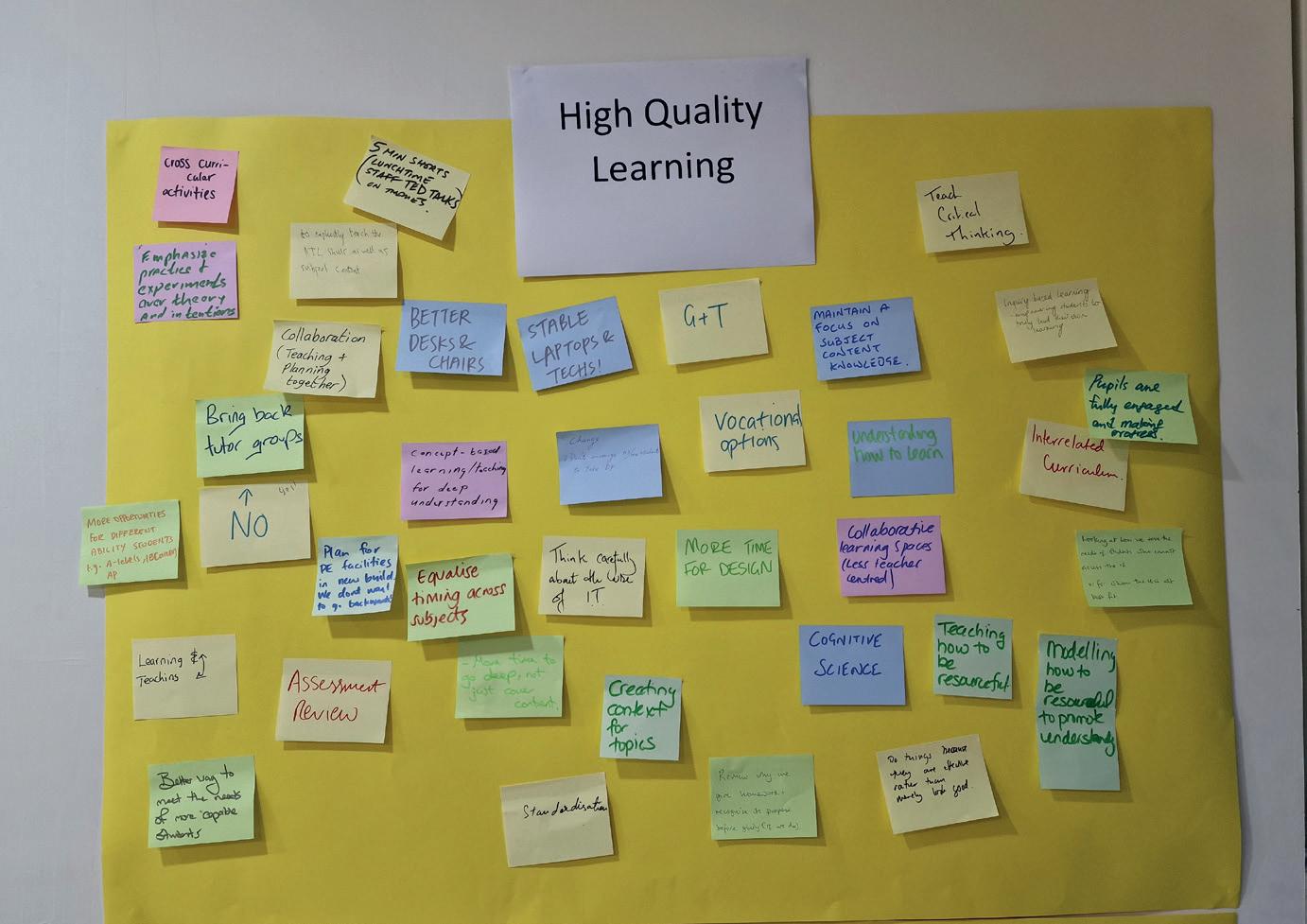
‘assessment-capable’. In simple terms, students know where they are, where they can go, and how to get there. If the school believes that this is the best way to help students achieve their potential and go on to a future in which they can evaluate their own strengths and assess their own needs, identify actions they can take and reflect on the success or otherwise of those actions, then it doesn’t make sense to see teacher professional development as a top-down influx of ‘expert’ initiatives restricted to an in-service day. Instead, the school can create a culture where teachers understand that they are the experts, in the privileged position of being able to test out what works to improve student learning in every single lesson. As a bonus, the school also moves away from the notion that performance management is an external evaluation of how well you are teaching in one given moment, and towards an evaluation of how well you are able to practise the business of teaching in a reflective cycle of inquiry into what has real impact.
So, how can a school make this change? What follows are my proposals for a sequence of steps to take.
Step 1: Ask ‘what do we expect from teachers in our school?’
Before teachers can be empowered to take meaningful control of their own professional learning and growth, the school needs a framework which essentially defines quality teaching and learning, as well as a strategic direction.
(See ‘High Quality Learning’ photo).
Step 2: Ask ‘what is the school trying to improve?’
The school has already identified that assessment practices need to be improved, and much work has already gone into addressing the problems of summative assessment overload for students, the need for embedded assessment for learning, peer and self-assessment practices,
12 | International School | Spring 2024 Features
and the role of feedback. As with any strategic direction, departments and individual teachers may move at different paces within an overall improvement of assessment practices. Departments have differing needs and starting points, as do individual teachers, and so it becomes vital to engage teams and individuals in a process of self-assessment, planning and reflection.
Step 3: Ask ‘what is each department trying to improve?’
Within an overall strategic approach to improving assessment, each department should identify one key area for development. Following the work of Steve Barkley (https://barkleypd.com/), this area for development is best framed as a hypothesis. For example, within a school focus on assessment, a department may want to improve feedback practices and so would hypothesise as to the impact of doing so. The department growth plan should include the actions the department and individual teachers will take in testing out this hypothesis, as well as how the success, or otherwise, of implementation will be measured.
Step 4: Ask ‘what is each teacher trying to improve?’
Within a whole-school focus on assessment, and a departmental focus on feedback, what am I going to do as an individual teacher? To answer this question as a teacher I would choose a class and define my individual hypothesis connected with the departmental hypothesis. This hypothesis would create the focus of my professional growth over a full school year. As an English teacher, for example, I might hypothesise that if students record and revisit feedback over time, they will build their understanding of their individual goals and targets, and this will allow for increased progress. Because my hypothesis has grown out of the department hypothesis which grows out of the school strategic plan or focus, as a teacher I have not only a shared sense of contribution to the overall development of the team but also the opportunity for individual growth. Once I have identified a focus area I will need to plan for the specific actions I will take in my classroom to test out and measure my hypothesis.
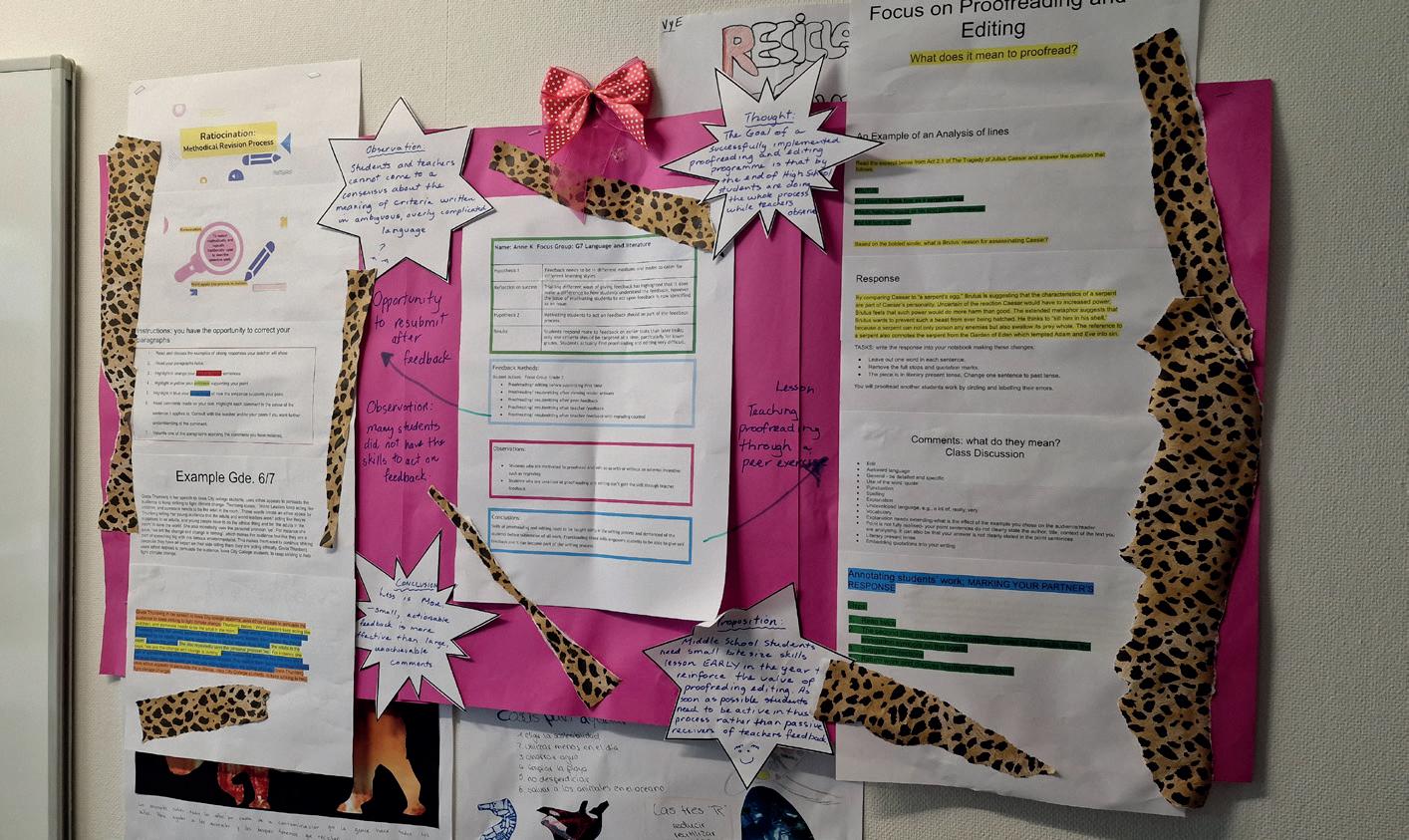
Step 5: From planning to action: intradepartmental peer-to-peer support
In creating a culture of professional inquiry, teacher-to-teacher support is a powerful step in the implementation of actions and particularly in gathering evidence of impact. Teachers can be paired within their departments and asked to identify ways in which the hypothesis could be tested. One such way is to observe a class period where each teacher is actively focused on the testing of their hypothesis. The peer observer can act as a sort of ‘research assistant’ to the teacher, whereby the teacher defines the focus of the observation and the methods of evidence collection. This could entail observing, or talking to, specific students during the lesson, interviewing students post-lesson, reviewing lesson materials and so on. The aim is not for the peer to evaluate the success of the lesson from an observer’s standpoint, but rather to support the teacher in assessing the success, or otherwise, of their hypothesis.
Step 6: A community approach to growth
Before beginning a new professional growth cycle it is important to celebrate the successes of department teams and to allow them to share their team, and individual, learning. Senior leaders should ensure that an opportunity is created for each department to present their planning, implementation and evaluation of success with regards to their departmental hypothesis. This approach brings the teams together in their collective efforts, but also
allows each team to learn from others and potentially adapt approaches as a school moves into a new cycle of development. Sharing collective growth is invaluable in creating a culture of professional inquiry. (See photo above).
Reflection and Evaluation
Many schools already recognise the advantages for teachers of moving towards a peer-supported professional growth model rather than the traditional appraisal model. For students, the advantages of innovation in the classroom are many. Firstly, students see teachers modelling lifelong learning. Teachers who are empowered to hypothesise and take risks are more likely to be innovative and creative in their response to student needs. However, this model does need to be built on established trusting relationships, and so the school needs to be confident in the ability of its teachers, in the resilience of its student body, and in the support of the parent community. A rigid hierarchical school structure, for example, may not lend itself well to such an approach. A school in this position may first want to evaluate and change the structures and practices which don’t support a culture of professional growth before rebuilding with a model such as this.◆
Ann Lautrette is Deputy Head of the British Secondary and High School Section at Taipei European School, Taiwan ✉ ann.lautrette@tes.tp.edu.tw
Spring 2024 | International School | 13 Features
Building Successful School Culture
Part 2: The School Professional Culture Arena
By George Scorgie
This article, part two of a series on school culture building (see the Winter 2023 issue of this magazine for part one), explores how school leaders in the international sphere can build and maintain a cohesive and positive school culture, and embed their school mission and vision into every aspect of school life.
The first part of this series introduced a model of culture building called the Cultural Core Framework (CCF). The CCF sees school culture as forming in four distinct but interdependent social and professional arenas:

• School Professional Culture Arena: beliefs about the professional identity and culture of the school;
• School Professional Practice Arena: policies, processes and actions involved in the daily operations of the school;
• Non-School, Social & Residential Arena: practices and approaches taking place outside the classroom and in the residential programs if applicable;
• School Social Cultural Arena: beliefs and understandings of school identity and culture held by the school community outside the classroom.
In each of these arenas there are a number of strategies school leaders can utilise to help them guide identity, culture, and practice across the school. This article examines the first of these, the School Professional Culture Arena: the area where each individual’s identity, ideas, and ways of doing and knowing interact. It is a cultural arena of both personal and professional interaction. How we see ourselves and how we understand the identity of the school informs how we act, and the Professional Culture Arena represents the space where these intersect.

Before exploring the approaches school leaders can utilise to shape the School Professional Culture Arena, it’s vital to note that at the centre of the Cultural Core Framework, connecting all aspects of school culture building, are school leaders, whose role it is to embed school identity, mission and vision into the daily experiences, routines and practices of their school. This is called Mission Focused Leadership. The first step must therefore be to define what the mission is. With most desks in many international schools globally now filled by local students,







perhaps the most fundamental of the questions defining a school’s identity may include ‘are we a local school with an international curriculum, or are we an international school in [insert location here]?’. Culture is as much comprised of what is purposefully excluded as of what is explicitly included, so the answer to this question is important as it forms the bedrock of identity, informs the privileging of language, contextualises parent expectations, guides teaching, learning and assessment, helps define collaboration, and informs how students may be expected to behave. Answering the question as to who we are as a school is vital in providing the foundational structures of school culture. Beyond this, a clearly defined identity and purpose also feeds into the process of cultural priming – how the school physical space reflects the culture: anything from art work to classroom posters, the language used at school events or in school publications, the





Leading, Teaching and Learning | International School | Spring 2024
holidays celebrated and so on. It may seem trivial, but exposure to cultural symbols in workplaces has been shown to have an effect on shaping the cultural behaviours of individuals (Fu et al, 2016).
Once armed with an unambiguous understanding of school identity, there are three key strategies school leaders can use to embed this in the school’s professional culture arena:
it’s the culturally erosive message they send to everyone else that they can do it their way and get away with it. This is especially the case with more visible transgressions: chronic lateness or leaving early, missing deadlines, being public with criticism or dissent around organisational policies and practices and so on. Richard Caffyn (2018) describes these individuals
they can actively manage teachers in their department before the need for more formal arrangements such as probation extensions that may be put in place by senior leaders. In this way, Mission Focused Leadership is not just the remit of senior leaders; it involves the initiatives, ideas and innovations of each level of school leadership.
How we see ourselves and how we understand the identity of the school informs how we act...

The first strategy is to enculture new staff members during their orientation. New staff inductions are invariably busy and, from the perspective of new staff, are often overwhelming. This is not to say that all the information presented isn’t important, just to say that at the most basic level, the burning questions each new staff member have are: what is my job?; where will I be doing it?; how would you like me to do it?; what systems do I really need to know to be ready for when my students arrive in a few days? These questions also sit at the core of school professional culture, so a simple, yet very effective, strategy is to be explicit with the answers to these. Orientation and onboarding are not times to be ambiguous: they are, perhaps, the most critical time to be explicit on questions about who we are, how we do things, and who we most definitely are not. Successful school cultures are actively curated, and this must begin from the very first day new staff are on campus.
and groups as vampires as they slowly but surely fragment culture and suck the life out of the school. It becomes vital that school leaders actively reduce the shadows in which vampires can hide, confront vampires directly if need be, and be active with management strategies that reduce the collective pebbles in the school’s collective shoes.


The reason for the above explicitness links to the second strategy: accountability to organisational cultural expectations. The mantra for accountability is that it is the pebble in your shoe that causes the most annoyance. In this case, it isn’t the actions of the individuals in question who may be the greatest cause of cultural disharmony,

References

The third key strategy is to genuinely empower teachers and middle leaders to make organisational change. Effective culture building, as part of effective leadership is, as Gurr (2015) noted, a layered process that needs to involve the building of leadership in others. This not only includes middle leaders as important stakeholders in school transformation, it also means schools can leverage the understandings and ideas of their often diverse staffing and middle leadership body (Gardner-McTaggart, 2018). Culture building cannot be top down: school senior leaders must set clear goalposts and define clear boundaries, then empower middle leaders to embed these. This includes involving cultural stakeholders such as heads of department in recruiting, policy reviews and so on, and providing them with structures so

This is not to say that creating a cohesive and shared professional culture is an easy task. On the contrary, it necessarily involves the willingness and strategies to have what many may frame as difficult conversations. What is clear, however, is that schools where the bedrocks of identity remain undefined, the processes of onboarding are not precise, and accountability is perceived as inconsistent, often develop multiple professional cultures operating simultaneously. The interaction of these cultures often lies at the heart of corrosive professional conflicts, serving only to further reinforce parochialism on all sides.
With the School Professional Cultural Arena providing the scaffolding around which culture is shaped, the next article in this series will examine the manifestation of this as the policies, practices, and everyday actions and interactions in the School Professional Practice Arena. ◆
✉



• Caffyn R (2018) ‘The Shadows Are Many ...’. Vampirism in International School Leadership: Problems and Potential in Cultural, Political, and Psycho-Social Borderlands. Peabody Journal of Education. 93(5): 500-517.
• Fu J H-Y, Zhang Z-X, Li F & Leung Y K (2016) Opening the Mind. Journal of Cross–Cultural Psychology. 47(10): 1361-1372.
• Gardner-McTaggart A (2018) International schools: leadership reviewed. Journal of Research in International Education. 17(2): 148-163.
• Gurr D (2015) A Model of Successful School Leadership from the International Successful School Principalship Project. Societies. 5(1): 136-150.





• Scorgie G (2021) School Culture, Leadership and Language Development in a Chinese-International School [Doctoral Thesis, Charles Sturt University] Available at: https://researchoutput.csu.edu.au/en/publications/school-culture-leadership-and-language-development-in-a-chinese-i



Spring 2024 International School Leading, Teaching and Learning | | 15
Dr George Scorgie is Deputy Head (Pastoral) & Head of Boarding at Trident College, Zambia.
georgescorgie@gmail.com
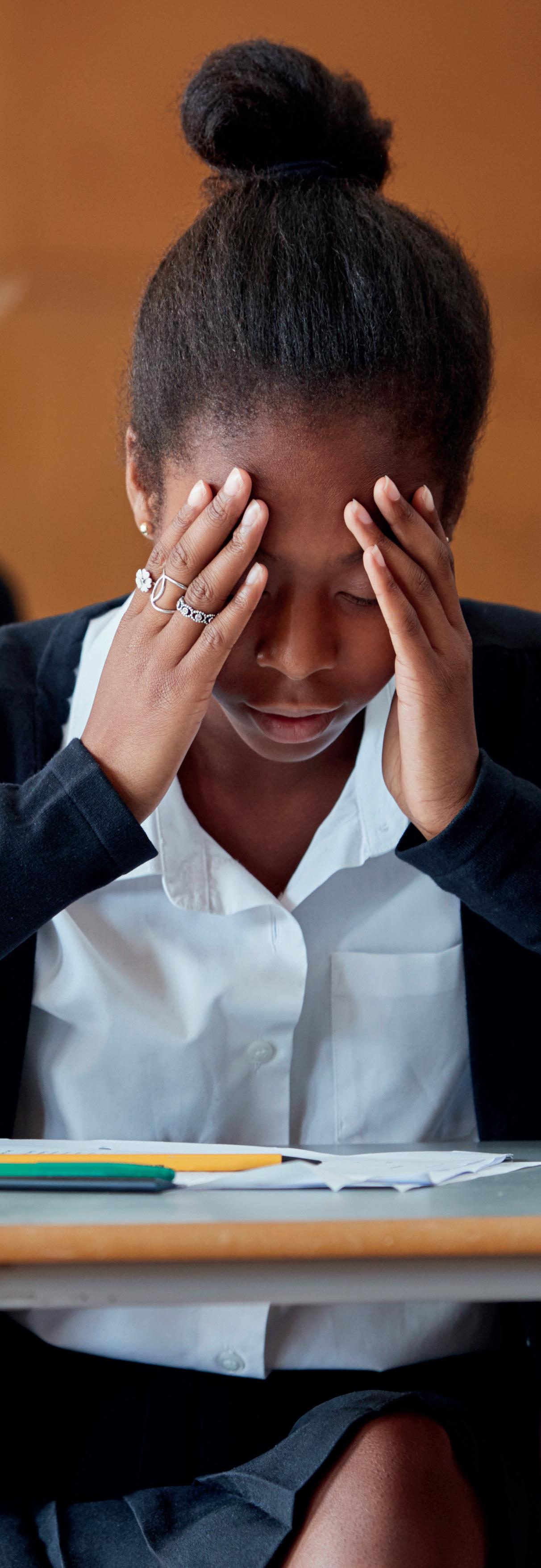
Reflections on Learning and Teaching:
Who Are School Assessments Really For?
By Cherry Atkinson
Targets. Progress. Value-added. Attainment levels. Stretch and challenge. Intervention and support. I would be shocked to my core if you could show me one teacher who has not been in a meeting where these concepts have been discussed at great length.
We are living in an age where there is increasing accountability across all service industries, and where ‘feedback’ is requested for every service – even visiting a public toilet! The idea is that, ostensibly, feedback improves performance. It provides an indication of what the service is getting right and what it needs to work on. That all sounds fine; it’s important to say thank you to people who are going a good job, and to be able to complain if the service is poor.
However, there is an unspoken element here, where you are not just required to do your job well – it becomes necessary to prove that you are doing your job well. This mindset has crept into every aspect of the labour market, and teaching is no exception. Whether you work in the state sector, independent sector or the international sector, you will be appraised regularly, and a significant part of that appraisal will be the progress and performance of your students. As of course it should be. It stands
it becomes necessary to prove that you are doing your job well
to reason that the ultimate goal of any teacher should be to help their students to progress. But what should that progress look like?
The easiest way to show educational progress is through numbers. Data. Movement along a scale or continuum. The easiest way to get that data is to test, score and grade. There has been a slow but steady shift towards assessment-led teaching, which I believe has been driven by the need for schools to prove that

they’re doing a good job. School leaders and classroom teachers are conscious that the people paying their wages want to see progress, and in the independent and international sectors that means parents. The parents are the customers, and the customer is always right. This is quite often reflected in practice through a curriculum based around assessment opportunities. Weekly, fortnightly, monthly or termly grades can be instantly shared with parents, and numbers can be crunched by data managers. It would take a bold and supremely confident senior leader to try and buck this trend, but what we are seeing more and more frequently in the classroom is an increased number of anxious children who ask: Is this going to be graded? Will this be in the test?
Rather than enabling children to take delight in the acquisition of knowledge and experience, the heavy focus on proving progress seems to be sucking the joy out of learning. Think about the last book you read, or a documentary you might have watched recently: would you have enjoyed it in the same way if you knew there was going to be a test on it afterwards? Children are under pressure from all sides, and perhaps what they need is some respite from the relentless assessment regime of their daily school experience, where they must feel that their worth is weighed, measured and judged on an alarmingly regular basis by most of the authority figures in their lives. Children the world over are experiencing mental health issues – many of which are rooted in educational pressures (Keane, 2023; PA Media, 2023), but there is no indication that things are going to change any time soon. Education that is focused on testing must surely be a major contributor to anxiety in children and yet here we are, blithely continuing down a path that could be setting them up for an adult life riddled with mental health problems – all in the name of ticking a box to say that we deserve to be paid.
What I would like to see, in a utopian world where such things might happen, is the development of schools where children can just be children while they are children. I would like to see children being guided towards a love of learning and exploration, discovery, wonder and creativity. It’s going to be hard to unlock the genius of future generations if we insist on teaching them that the only way of being deemed ‘clever’ or ‘smart’ is to pass a test, or gain a certain level in an exam. There are countries in the world where ‘educational competition is downplayed’ (Pellisier, 2023), but they are small islands of anomalous practice in an ocean of assessmentheavy national and international systems.
Just as the shift towards assessment-led teaching has been incremental, the further shift towards enjoyment-led learning
could take place through small but manageable increments. I want to make an earnest plea for school leaders and education policy makers to consider that perhaps reducing the assessment burden might be a more effective way of supporting staff and student wellbeing than putting on yoga classes after school, or teaching deep-breathing techniques during a lunch break. This will require some brave decision-making, and some very firm and frank discussions with parents, but the benefits could be enormous. The shift away from assessment-led teaching would require school leaders and policy-makers to place more confidence in teachers’ professional judgement, which is where my utopian dream begins to fall apart. Whilst most teachers I know (and certainly all those who are worth their salt) can tell you within a couple of weeks of meeting a class what their students’ abilities are, that does not translate too well on a spreadsheet as ‘evidence’. Those same teachers can easily tell you who is ‘top’, ‘middle’ or ‘bottom’ in their class; testing merely confirms what can be judged professionally (and discreetly), but it cements that position in a child’s mind and adds a level of pressure that brings joy to no-one.
If we want to instil a love of learning in our young people and foster their creative talents rather than point them off towards a world of anxiety and poor mental health, it is vital that we at least start a conversation about the actual value of testing –who is it for? Does it really help the students in our care, or is it predominantly a way for teachers to satisfy their paymasters? What the customer wants and what the customer’s children need are perhaps two very different things. ◆
References
• Keane D (2023) Exam Stress is Putting Students’ Mental Health at Risk, says UCL Research. Available from https://www.standard.co.uk/news/health/examstress-teenagers-children-mental-health-risk-ucl-research-b1100111.html
• PA Media (2023) Head Teachers Express Concern Over SATs Amid Claims a Paper Left Pupils ‘In Tears’. Available from https://www.theguardian.com/ education/2023/may/11/headteachers-express-concern-over-sats-amidclaims-a-paper-left-pupils-in-tears
• Pellisier H (2023) The Finnish Miracle. Available from https://www.greatschools. org/gk/articles/finland-education/
Cherry Atkinson is currently working as Head of Individuals and Societies at an IB international school in The Bahamas.
✉ cherryatkinson@hotmail.com
Spring 2024 | International School | 17 Leading, Teaching and Learning
Onscreen Assessment
Choice for you and your students

Offering students the choice to sit either onscreen or paper exams ensures the best possible outcomes, preparing them for the workplace and further education. We have been delivering onscreen exams since 2022 and have seen students reacting positively at the opportunity to take their high-stakes exams onscreen.
Students love it!
93%* of students told us that they use devices outside of school activities on most days or every day and 86%* use them for projects and assignments at home on most days or every day.
Students say:
We used a lot of online apps to help us get used to using a computer like we would in the exam and that really helped, it also made me feel a lot more confident about taking the exam online.
Isabel Clare Cattell - Student at Qatar International School
Teachers love it!
With easy onboarding for schools, support for staff and invigilators and great benefits for students it’s easy to understand why we have seen the number of schools adopting onscreen assessment triple for this current exam season.
We live in a technological world now and education is moving in a particular direction that would suggest that exams will be online. We wanted to be one of the leaders in the country.
Michael Merrick, Associate Head of Secondary, Qatar International School
It’s been a fantastic experience for us as a school, but also for our students who were absolutely delighted to work in a way that they felt most comfortable with.
Wayne Ridgeway, British School of Bahrain
By 2026 we will have 14 International GCSE and International A Level subjects available with more subjects being added.
* Post assessment student survey July 2023
To find out more and register your interest visit
www.pearson.com/international/oa
18 | International School | Spring 2024 Leading, Teaching and Learning

Resisting the ‘Best Possible Self’ Narrative Within a Teacher Education Programme
by Natalie Shaw
Ateam of colleagues on the ITEPS (International Teacher Education for Primary Schools) Bachelor of Education (BEd) programme at NHL Stenden University in the Netherlands recently approached me with the request to teach an introductory session on meditation and mindfulness to our new first-year cohort. As a passionate teachereducator, actively practising meditator, and qualified practitioner in vormingsonderwijs (a world view teaching approach offered at primary schools in the Netherlands: Franken & Betram-Troost, 2022), I actively embrace the opportunity to share my praxis with students. Yet at the same time, whenever I teach meditation, I am concerned about the ways in which students may engage with this subject matter.
In this article, based on professional practice and reflection as well as personal contemplation, I will connect my concern about my students’ response to this introductory meditation session to the ways in which students engage with setting professional development goals. I will use two approaches to shed light on both activities: the neoliberal view, wherein meditation, mindfulness, and goal-setting are viewed as a personal project of selfimprovement (Brito et al, 2021; Reveley, 2016; Reveley, 2013), and the more critical view, in which both activities may offer a pathway towards counteracting the premises of the consumer-capitalist society and act as forces for change (Scherer & Waistell, 2017; Reveley, 2013). From the outset, I wish to make clear that, like everyone in education, I am caught in the sticky threads of the current
system’s prevalent, growth-oriented selfoptimisation logic. With the help of others, I actively try to cut loose from these as best I can. In doing so, I appreciate the solidarity and inspiration of colleagues near and far who are working on the same project.
Neoliberalism’s glittering mirage of a ‘best possible self’
Within a neoliberal perspective, meditation and professional goal-setting emerge as endeavours with the ultimate aim of personal improvement, adding to a rich personal portfolio of marketable skills. My colleagues and I encounter this version of ‘cognitive capitalism’ (Reveley, 2013: 539) in the pernicious formulation of a ‘best possible self’ which students frequently profess to strive towards when formulating professional development goals. In doing so, they echo the message of popular media (see, for instance, Niemiec, 2013). Yet not only in popular discourses can the idea of a best possible self be found; it also manifests in academic publications (Boselie et al, 2023; Heekerens & Eid, 2020; and critically Reveley, 2013).
Within this approach, learning to meditate and to increase one’s mindfulness may emerge as a further tool for ‘an effective manipulation to temporarily improve optimism and affect’ (Boselie et al, 2023). As early as 2005, the New York Times reported efforts to teach meditation in schools as a ‘possible antidote to rising anxiety, violence and depression among students’ (Micucci, 2005).
As teachers, we may appear in dire need of an optimistic outlook: we practise our craft within systems increasingly dominated



by data-driven quests for ever-optimised excellence and efficiency (Department for Education, 2017; Schleicher, 2019). In both education and the wider world, we witness processes of unravelling. From having policy dictate our pedagogy (for an analysis of the way Ofsted now defines the concept of play for Early Childhood educators, see Wood, 2019) to the mounting effects of extractivisim, injustice, and climate emergency, optimism may not be a ready response most of us would be able to summon. Reaching for an antidote, as the rather superficial application of mindfulness may offer us, may appear tempting as a means to avoid asking the deeper and more difficult questions – for example, tracing the root causes of the mounting mental health crises beyond the realm of the personal.
Meditation and mindfulness of a neoliberal ilk appear to have us covered in providing a ready tool for personal change, effectively distracting us from acknowledging the need for systemic shifts within our profession as well as society at large. ‘Social problems’ appear as ‘private concerns rooted in individual biology, mentality and behaviour’ (Nehring & Frawley, 2020: 1184). If we fall victim to this siren call, however, we may be foregoing the transformative potential of deeply feeling the dismay, grief, and outrage that should be our response to the many
Spring 2024 | International School | 19 Leading, Teaching and Learning

injustices and violations witnessed in the world of which we are inextricably a part (Macy, 2021). In resorting to ‘psychological imaginations’ (Nehring & Frawley, 2020: 1184), we jettison the possibilities that lie in collectively asking deeper, probing, and difficult questions about the origins of the mental distress that meditation and mindfulness profess to allay.
As to my imminent meditation and mindfulness introduction, I am consequently concerned that students might share meditation and mindfulness practices with children in domesticating ways, in line with current practice in many schools. An uncritical mindset may frame these practices as handy, 5-minute engagements to quieten the children sufficiently to engage in the next learning task with improved concentration, leading to ever-greater subject mastery within an ever-narrowing curriculum and approach to schooling. Ergas terms this approach ‘mindfulness in education’ (Ergas, 2019: 340; my italics), in contrast to the more transformatively oriented ‘mindfulness of education’ (Ergas, 2019: 340, my italics).
Even in schools that may wish to strive against the technocratic application of mindfulness in education, oftentimes there is a singular time chosen for a mindfulness focus, for example at the beginning of the day. Yet the remainder of the day then passes in breathless pursuit of utilising the available instruction time ever more efficiently. Students in our degree course, returning from teaching practice, report that both play time and snack time suffer such optimising efforts. What will children take away: the fact that they learnt some





calming breathing techniques for 3 minutes in the morning, or the fast pace and resulting feeling of being overwhelmed that governs the vast majority of their time spent in school?




In an extension of the self-improvement project approach, meditation may be welcomed in schools as a further element of the children’s set of social-emotional skills (Reveley, 2013; for an interesting critique of the Western-centric approach to social-emotional learning see You, 2023) and used to foster ever more ‘effective’ learning according to the inherently neoliberal efficiency logic.
Hand-in-hand with the neoliberal enthusiasm for embarking on what within our faculty we occasionally term ‘personal DIY projects’ goes a consumerist readiness to acquire ‘technologies of the self’ (Foucault 1982, in Leggett, 2022: 262). Our students frequently draw on an abundantly available technological tool library for their mindfulness projects: meditation apps, podcasts that purportedly foster improved sleep, and online selforganisation planners. After all, mindfulness is an undeniable market, leading to the moniker ‘McMindfulness’ as coined by Purser (2019).
Cunningly, it works in vicious cycles: the very products acquired to assist in the meditation and mindfulness project themselves command the users’ attention (Chayne, 2022; Purser, 2019), leading to the ever-increasing experience of a lack of attention and focus. Impatient with what is consequently perceived as a personal failing in one’s mindfulness aspirations, students may then fall ready victim to ever more consumerism as a way to alleviate the feelings of dissatisfaction about ‘getting nowhere’.
A further characteristic of this mindset is the solipsistic aspect that, in our experience, renders each student the perceived lone driver of their personal self-improvement project. Occasionally, students tend to lean on peers for feedback and support, particularly if moments of doing so are structurally built into the programme. Yet ultimately, students rarely embrace the true interwovenness of learning and the ways in which the opportunities for personal and professional evolving can be explored and shared with others. If encouraged and challenged to do so, however, students
may find that the very moment of being addressed by the other may lead to deeper learning than any self-propelled tinkering in the margins (Biesta, 2022).
Gesturing towards a more critical engagement
An alternative, and my personally preferred, approach towards meditation is one that recognises it as a deeply culturally rooted practice that is embedded in complex Buddhist philosophy and worldview. Central to this is the attempt to interrogate the ultimate source of human suffering (Hanh, 2015). This in turn will point the meditator towards a contemplation of the inherent futility of attaching oneself to all phenomena that are naturally transient in nature, as their loss will unfailingly lead to suffering.
Meditation also enables the practitioner to sit, literally and figuratively, with the uncomfortable emotions and thoughts that arise. There is no best possible, nebulous self out there that elusively yet tantalisingly hovers just beyond reach, yet ready to manifest if the practitioner tries hard enough. The disappointment that may be felt when this desired mirage fails to materialise may all too easily be poured into acquiring the next distraction, entertainment, or gadget –unless meditation is used with the intent to allow for a critical questioning of the dissatisfaction, boredom, and doubts of self-worth that may propel us towards the next act of consumerism. Learning to be with uncomfortable feelings, thoughts and situations is also a vital basis for having the difficult conversations that education needs to address in the pursuit of challenging racism, sexism and colonialism, amongst others (Dadvand et al, 2022).
Further, core meditation practices encourage the practitioner to reflect upon a key tenet of Buddhist philosophy: the concepts of non-duality and interbeing (Hanh, 2015). Sometimes visualised with the image of a multi-faceted web, the idea of humans as solipsistic, independent creatures in need of no-one else is challenged even in the very simple, beginner-level contemplation of all that is present in a generic food item or cup of tea: from the weather conditions that allowed the growth of the tea plants to the resources that went into creating the cup itself, the transportation of
20 | International School | Spring 2024 Leading, Teaching and Learning
2023)
both tea and cup so they end up in the practitioner’s hands, to the water as a main ingredient and sustenance of life. Invariably, this leads practitioners to contemplating the entanglements between objects previously viewed as ‘things’, and can give rise to a profound appreciation of the interdependence that is a hallmark of deep ecology thinking.
The thought of interdependence leads to a further fundamental idea underpinning Buddhist practice: it is vital to seek support from those who share our path in life through the community that surrounds us. In a podcast episode, Buddhist practitioner Brother Pháp Hũu (Hũu & Cofino, 2021) describes the practice of voicing aspirations at the beginning of the Rains Retreat, a traditional period of contemplation established in the time of the historical Buddha. Each member approaches the community with a goal they have in mind, formed through careful mutual encouragement and the practice of providing thoughtful feedback to one another. The community is then asked to support each member, transforming personal aspiration into mutual, shared endeavour.
From this, I wonder whether we may use this idea to unsettle and thereby invigorate students’ approach to personal goal-setting. Rather than formulating these independently, can we invite students to see these as learning adventures that are not solitary paths, but that unfold in a web of events, places, objects and others that may all be called upon to support, to give shape, to redirect if necessary?
Concluding thoughts and aspirations
From what I have shared, I would like to suggest a few ways of moving forward as examples in my own practice. I frame these as my own aspirations, and hope that my colleagues and other human and nonhuman actors on my path will emerge as parts of an interdependent web that holds me in attempting to address them.
When teaching about meditation, I will try to invite students to think critically about
Dr Natalie Shaw is an ITEPS lecturer and Year 2 Coordinator at NHL Stenden University, the Netherlands.
✉ natalie.shaw@nhlstenden.com
current trends in education and adjacent disciplines, their own position towards these, and not to shy away from the complexity of engaging.
When supporting goal setting, I will try to reflect on the process with the students to break out of solipsistic self-improvement narratives and into the rich, messy, multi-
References
faceted world of learning with, from, together with others and the world of which we are a part.
And, as Zen master Thich Nath Hanh responded when asked how not to despair about the state of affairs and the small contribution we may potentially make: you tried. And ultimately, that is enough. ◆
• Biesta G (2022) World-centred Education: a View for the Present. London: Routledge.
• Boselie J L M, Vancleef L M G, van Hooren S & Peters M L (2023) The effectiveness and equivalence of different versions of a brief online Best Possible Self (BPS) manipulation to temporary increase optimism and affect. Journal of Behavior Therapy and Experimental Psychiatry. 79.
• Brito R, Joseph S & Sellman E (2021) Exploring mindfulness in/as education from a Heideggerian perspective. Journal of Philosophy of Education. 55(2): 302-313.
• Chayne K (Host) (2022, April 26) Reclaiming our capacities for deep thinking and intimate engagement. (No. 354) [Audio podcast episode]. Available from https://greendreamer.com/podcast/johann-hari-stolen-focus
• Dadvand B, Cahill H & Zembylas M (2022) Engaging with difficult knowledge in teaching in post-truth era: from theory to practice within diverse disciplinary areas. Pedagogy, Culture & Society. 30(3): 285-293.
• Department for Education (2017) Teaching Excellence and Student Outcomes Framework Specification London: Department for Education. Available from https://assets.publishing.service.gov.uk/government/ uploads/system/uploads/attachment_data/file/658490/Teaching_Excellence_and_Student_Outcomes_ Framework_Specification.pdf
• Ergas O (2019) Mindfulness in, as, and of education: three roles of mindfulness in education. Journal of Philosophy of Education. 53(2): 340-358.
• Franken L & Betram-Troost G (2022) Passive Freedom of Education: Educational choice in Flanders and The Netherlands. Religions. 13(1).
• Hanh T N (2015) The Heart of the Buddha’s Teaching (3rd ed.) Harmony Publishing.
• Heekerens J B & Eid M (2020) Inducing Positive Affect and Positive Future Expectations Using the Bestpossible Self-intervention: A systematic review and meta-analysis. The Journal of Positive Psychology. 16(3): 322-347.
• Hũu Br P & Cofino J (Hosts) (2021, September 24) Slow Down, Rest, and Heal: The Spirit of the Rains Retreat (No 7) [Audio podcast episode]. Available from https://plumvillage.org/podcast/slow-down-restand-heal-the-spirit-of-the-rains-retreat#hypertranscript=NaN,NaN
• Leggett W (2022) Can mindfulness really change the world? The political character of meditative practices. Critical Policy Studies. 16(3): 261-278.
• Macy J (2021) World as Lover, World as Self. Parallax Press.
• Micucci D (2005, February 15) International Education: Meditation helps students. New York Times. Available from https://www.nytimes.com/2005/02/15/style/international-education-meditation-helps-students.html
• Nehring D & Frawley A (2020) Mindfulness and the ‘psychological imagination’. Sociology of Health & Illness. 42(5): 1184–1201.
• Niemiec R M (2013) What Is Your Best Possible Self? Available from https://www.psychologytoday.com/us/ blog/what-matters-most/201303/what-is-your-best-possible-self
• Purser R (2019) McMindfulness: How mindfulness became the new capitalist spirituality. Watkins Publishing.
• Reveley J (2016) Neoliberal Meditations: How mindfulness training medicalizes education and responsibilizes young people. Policy Futures in Education. 14(4): 497–511.
• Reveley J (2013) Enhancing the Educational Subject: cognitive capitalism, positive psychology and well-being training in schools. Policy Futures in Education. 11(5): 538-548.
• Scherer B & Waistell J (2017) Incorporating mindfulness: questioning capitalism. Journal of Management Spirituality & Religion. 15(2): 123-140.
• Schleicher A (2016) Teaching Excellence Through Professional Learning and Policy Reform. Organisation for Economic Co-operation and Development (OECD). Available from https://read.oecd-ilibrary.org/education teaching-excellence-through-professional-learning-and-policy-reform_9789264252059-en#page3
• Wood E (2019) Unbalanced and Unbalancing Acts in the Early Years Foundation Stage: a critical discourse analysis of policy-led evidence on teaching and play from the Office for Standards in Education in England (Ofsted). Education 3-13. 47(7): 784-795.
• You Y (2023) Learn to Become a Unique Interrelated Person: an alternative of social-emotional learning drawing on Confucianism and Daoism. Educational Philosophy and Theory. 55(4): 519-530.
Spring 2024 | International School | 21 Leading, Teaching and Learning
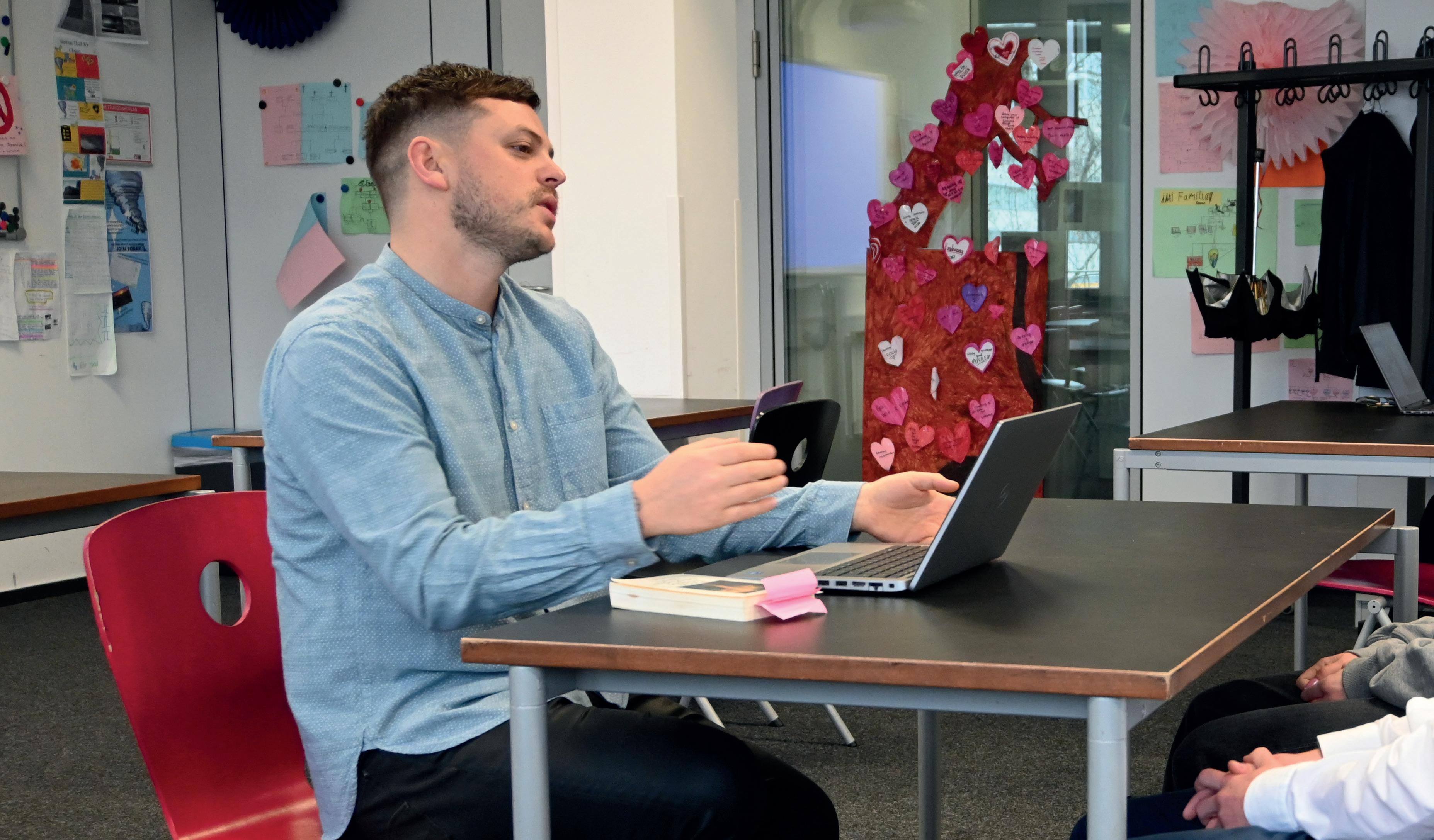
Intelligence on Demand How AI Challenges Educators
By Paul Juscha
Artificial Intelligence (AI) poses new challenges in many aspects of life, while simultaneously offering possibilities that were unimaginable until recently. In today’s era of rapid technological advancement, AI plays an increasingly significant role in our daily lives. From self-driving cars and intelligent assistants to advanced diagnostic systems in healthcare, AI has the potential to revolutionize various aspects of our society. The opportunities presented by the use of AI are impressive, ranging from increased efficiency in various industries to addressing complex challenges in different areas of our lives. However, this emerging technology also faces a range of challenges, from ethical concerns to potential impacts on the job market and education.
These two facets of AI – its possibilities and its challenges – require closer examination to develop a comprehensive understanding of the impact of this groundbreaking technology on our society and, particularly, on education. It has been over a year since ChatGPT, an AI solution that operates based on natural language, became a part of our lives. Since then, many processes at school have been set in motion, and traditional methods, approaches, and assessment criteria considered effective in teaching and learning need to be reconsidered, replaced, or revolutionized.
While students used to conduct their own research and perform the often-perceived tedious and timeconsuming writing tasks, many of these processes may now be outsourced to AI. This makes sense and can focus the learning process on essential tasks, giving students a certain delegation function where they stand above the details and the teacher’s assignments. Who needs to copy homework from the top student when there’s AI that can complete excellent assignments without demanding anything in return? This leads to the emergence of a modern and digitized student who seemingly has access to any personalized knowledge in the universe – knowledge on demand. What was once reserved for streaming music, movies, series, and podcasts is now available for knowledge and individual work and learning assignments. Why should a student memorize something when they can access information any time? Why should a student sit down and write a poem about diversity when they only need to input the prompt?
These questions are both justified and sobering. Why rely on one’s own intelligence when it can be handed over to artificial intelligence? It conserves cognitive resources and energy, which could be considered as operating in a conventionally sustainable sense. Outsourcing brings tremendous speed to completing assignments, and the ‘supreme’ student is
22 | International School | Spring 2024

Why rely on one’s own intelligence when it can be handed over to artificial intelligence?

eager to solve another complex and complicated task, sometimes without even reading before uploading it. What’s gone is gone, and it sounds nice. It has become a significant challenge for educators to slow down this process and show students the limitations of AI. This machine doesn’t know (so far) what it’s doing, and abstract thinking cannot be expected from it anyway.











To explore the students’ perspectives, one-off interviews were conducted with four students from DP1 (first year IB Diploma students) at Strothoff International School in Dreieich, Germany. They were asked to comment on the possibilities, limitations, use cases, and suggestions for improvement regarding the use of AI. The students’ responses were consistently positive, and they use modern technology for all subjects and types of assignments. The interviewees also stated to use AI as a starting point or idea generator to get the work rolling or to find inspiration. One student emphasized the interesting change in perspective that can alter the view of the assignment and broaden the horizon of the task. He compared it to group work, where similar effects can be observed for students, and the additional input from classmates is an added value for the whole class. Here, this algorithm-based technology takes on the role of another student who has a different or perhaps ‘better’ view of things.
As with group work, it can also happen with AI that students let AI do the work, believing that it’s enough to stand in front of the class during the presentation, hold the elaborated poster, and ‘participate’, following the principle of ‘hung together, graded together’. Some
students honestly admitted that the technology makes them lazy with its possibilities. Any task devised by the teacher where AI is not helpful is perceived as more than twice as annoying, and students tend to not even attempt to work on such tasks since they cannot be handed over to AI. This poses entirely new challenges for teachers that didn’t exist before, and that now define the daily lives of educators. The technology must be explained and demonstrated to students in a clever way so that it has a pedagogically correct and learning processpromoting effect. AI does not automatically mean that nothing needs to be worked on. On the contrary, many time-consuming processes can and should be delegated to AI, allowing students to focus entirely on their abstract thinking. This presents an opportunity to further advance students in their knowledge acquisition, as they now have much more time and capacity to focus on their deep learning. The key to success lies in the obvious: students must apply the technology wisely and become experts in their work in collaboration with AI.








Usually, a brief inquiry by teachers is enough to find out whether students really know what they are talking about or whether their work was based on a classic copy-and-paste approach. Teachers, above all, must do their homework, engage with the topic, show interest, and almost be enthusiastic about it. The technology is here, and it will not disappear. On the contrary, it will become an essential part of our daily lives, and there is a need to overcome fears and unfounded reservations, and harness its potential. Most students are already doing this and are very advanced in handling the technology. Teachers must not lag behind. ◆ is not to entirely teachers in correct
Spring 2024 | International School | 23 Leading, Teaching and Learning
Paul Juscha is a teacher of German and Global Politics at Strothoff International School, Dreieich, Germany.
✉ paul.juscha@sischool.de







Are you truly embedding wellbeing into your classroom?




OUP is proud to put both teacher and student wellbeing at the heart of our educational offering. From professional development courses to grab-and-go resources created with experts, OUP strives to make wellbeing simple in a busy work climate.

87% of teachers


87% of teachers in a recent OUP Educational Research Forum survey said that support for students’ mental health and wellbeing was a priority for their school.



Scan the QR code to browse our hub and see how Oxford’s wellbeing offering can transform your school today.
www.oup.com/wellbeing


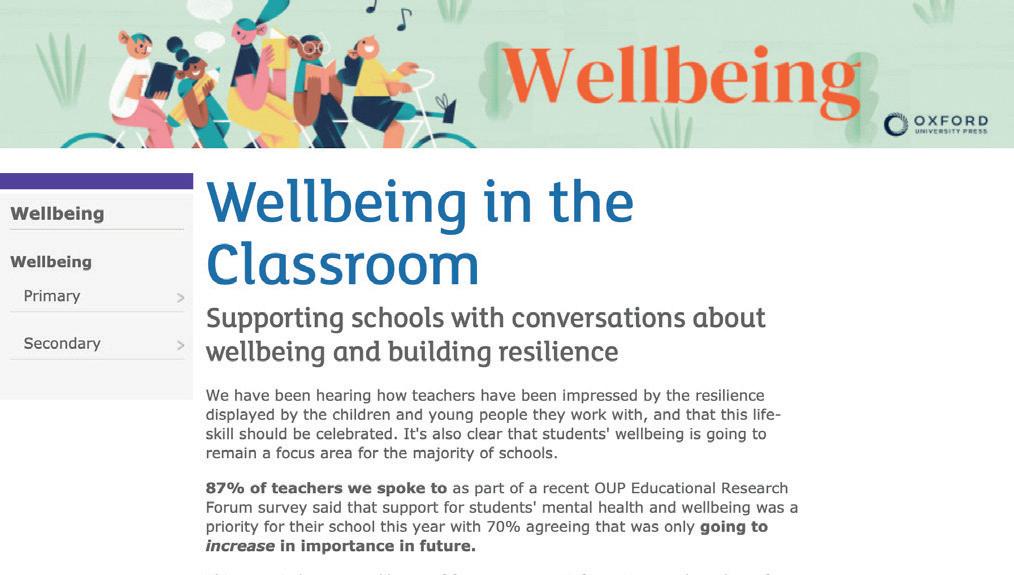

Explore our easy-to-navigate hub and integrate wellbeing into everyday learning with free resources, information, and products for teachers all around the world.



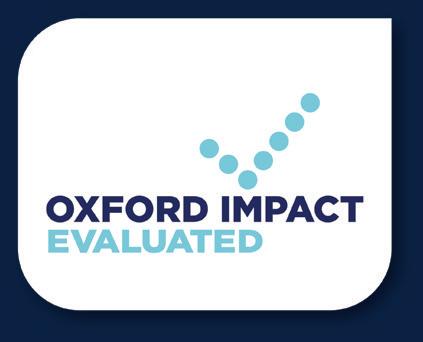
“There is convincing evidence of a relationship between wellbeing and academic attainment.”
Dr. Ariel Lindorff, Department of Education, Oxford University, drawing on research undertaken as part of an impact study conducted across a wide range of countries.
Find out more at:
https://oxfordimpact.oup.com/home/wellbeing-impact-study/


The Oxford International Curriculum offers a new approach to teaching and learning, placing joy at the heart of the curriculum by fostering wellbeing and developing life skills for students’ future academic, personal and career success.






This all-through curriculum integrates curriculum materials, continuous professional development, assessment and world-class resources preparing students for academic success in their future studies, including in OxfordAQA’s international GCSEs, AS and A-level exams.


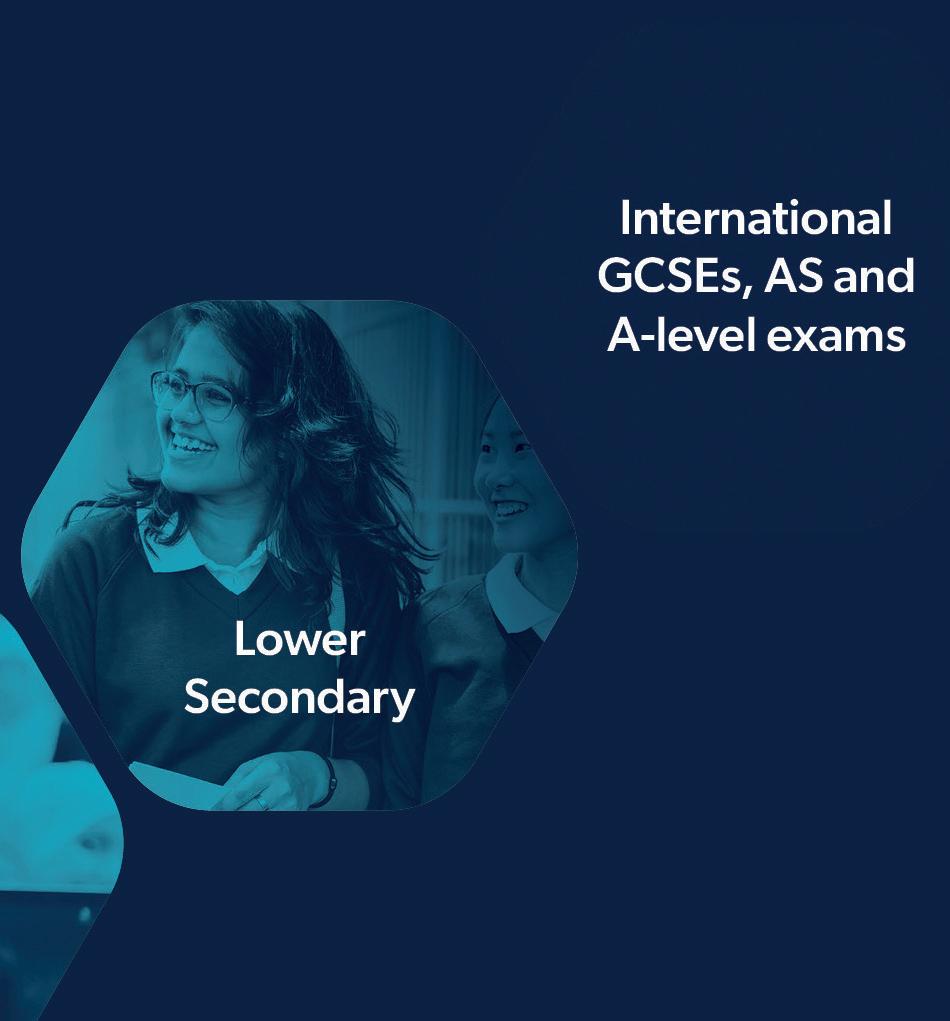



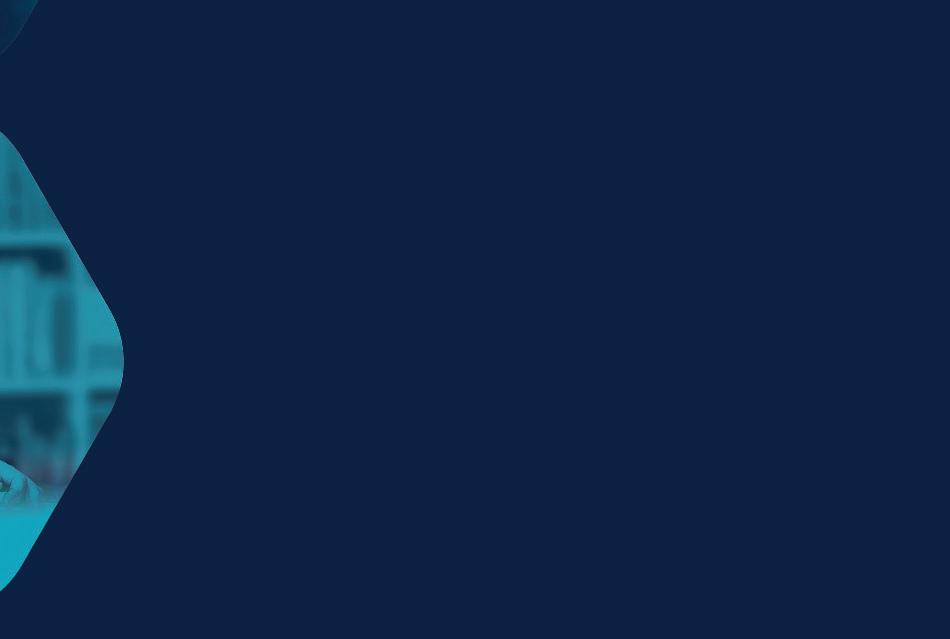




Spring 2024 | International School | 25 Leading, Teaching and Learning
] Resources Assessment Professional Development ]
wellbeing global skills sustainability
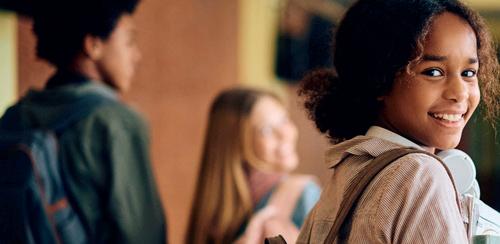
Five ways schools can support students’ mental health all year
Mental health and wellbeing support for pupils needs to be year-round and multi-faceted, writes Zoë King, deputy head at Royal Hospital School
The importance of supporting pupils’ mental health all year round cannot be overstated, as it has a significant impact on pupils’ overall wellbeing, academic success and future journeys in life.
Pupils with good mental health and strong coping skills are able to successfully navigate even the more challenging of times.
At Royal Hospital School, we believe wellbeing underpins all aspects of a young person’s experience at school. The majority of pupils find their exam periods to be a particularly stressful time but if pupils are supported all year round in preparation, this can help them be more resilient.
As a school with both boarding and day pupils, we also have to ensure extra support is available for boarding pupils, if needed, while studying away from home. Here are five ways that pupils’ mental health can be supported all year round…
“Staff are working with our young people to co-write self-care plans.”
Helping pupils learn and embed strategies for their own self-care and positive wellbeing
One strategy that can be overlooked is empowering pupils to learn and embed strategies for their own selfcare and positive wellbeing. School leaders can actively implement programmes and initiatives which equip pupils with skills to manage stress, build resilience and ask for support for mental health issues.
At RHS, we promote good wellbeing and mental health through activities, assemblies and talks with speakers. We also mark national days such as World Mental Health Day, Anti-Bullying Week, Youth Mental Health Day, and Men’s Mental Health Day and use these to raise awareness, reduce stigma, and provide signposting for pupils and parents.
Teaching pupils stress-reduction techniques, such as mindfulness, breathing techniques and taking short breaks can prepare them for periods of stress. We have also created wellbeing spaces across the campus, from quiet snugs in busy boarding houses to outdoor wellbeing walks.
Monitor each pupil’s wellbeing through our pastoral structures and systems
Another important way to support pupils is to continually monitor their wellbeing through pastoral
24 | International School | Spring 2024

structures and systems. At RHS, we created a provision map for all pupils in the school to understand their varying needs. As a result of this, staff are working with our young people to co-write self-care plans. It is beneficial to make pupils a part of this as it gives them a sense of control and teaches them how to care for themselves in the future by recognising which techniques and strategies work for them.
Additionally, a large support network underpins the care for each pupil, which includes a house parent, tutor, teachers, matron, chaplain, peer counsellors and school prefects plus a health and wellbeing centre and counselling service.
Support struggling pupils with specialist services
It’s always best to teach pupils preventative measures for resilience with their mental health but there are always times when some pupils need extra and specific services. Helping pupils receive personalised support services whether that is in the school or externally is sometimes essential and helps the pupil who is struggling feel supported.
We have set up a Wellbeing Working Group which comprises of pupils, parents, staff, a governor and an external agency for young people. This group meets at least half-termly, sometimes more often if needed. The group is focused on developing and improving the school’s wellbeing provision.
Communicating with parents and guardians as to how to support their children’s wellbeing
It is crucial to communicate with parents and guardians when supporting pupils’ mental health. Collaborating with pupils’ caregivers leads to better results for pupils. Creating an environment where teachers and parents can communicate any concerns is essential. This can be achieved through regular virtual updates and semiregular face-to-face meetings and phone calls.
Parents can also support pupils by receiving advice from the school to implement a balanced lifestyle. For
“Collaborating with pupils’ caregivers leads to better results.”
example, by helping the pupil get enough sleep, healthy nutrition and physical activity. Creating achievable goals with parents and celebrating the success and positive behaviours of pupils also furthers a supportive environment from home to school life.
Annual staff training
Teachers play a crucial role in shaping pupils’ overall wellbeing. As a result, it’s important to dedicate annual staff training to develop staff’s knowledge, skills, understanding and confidence in young people’s emotional wellbeing and mental health. This is something we implement at RHS.
We also embarked on the Optimus Wellbeing Award for Schools, which gave us the opportunity to review our wellbeing provision; recognise what we were doing well and develop new practices. Working towards the award also raised pupils, staff, parents and the wider school community’s awareness of wellbeing and mental health. We were delighted to gain the award in January 2023.
Supporting pupils’ wellbeing is multifaceted, encompassing mental, emotional, and physical aspects. The above strategies are some of many examples of how schools can support their pupils’ mental health all year round. ◆
Spring 2024 | International School | 25
The Royal Hospital School, located in Holbrook, Ipswich, is a leading independent co-educational boarding and day school for 11-18-year-olds, providing an outstanding, full and broad education fit for the modern world.
Wellbeing




If our young people lack resilience, whose fault is it?
Adults 'swooping in' to problem-solve stops young people developing resilience, writes
Maja Trachonitis from Sutton Valence School

The
In today’s discourse, the term “generation snowflake” has been used to describe our young people, suggesting a lack of resilience.
However, the responsibility for this might lie closer to home than we realise – it might be our own instincts as parents, guardians and educators that inadvertently hinder the development of resilience in our children.
Often, when our young people approach us seeking support or simply a listening ear, our instinct to shield them from discomfort takes over. Instead of allowing them the space to navigate their own challenges, we swoop in to rescue them. But what unfolds when we do this?
Primarily, we rob young individuals of the opportunity to solve problems autonomously. Even if the outcome is positive, they miss the chance to experience the sense of accomplishment and self-assurance that comes from tackling issues themselves.
It’s time we reconsider our roles as heroes and become comfortable with discomfort. In our fast-paced modern lives, the desire for instant solutions prevails. Yet, it’s crucial to sit with discomfort occasionally, as this is what fortifies our resilience for life’s inevitable challenges. By constantly shielding our young people from minor discomforts, we inadvertently hinder their ability to cope with greater adversities.
So, what does this paradigm shift look like in practice?
Picture
about a conflict with a close friend. They express feeling hurt by something their friend said or did. Your initial inclination might be to step in, offer advice, or even mediate the situation on their behalf.
Instead of immediately intervening or providing a solution, encourage the student to think through how they might approach resolving the issue themselves. Prompt them to consider different ways to communicate their feelings to their friend or to find a resolution that feels comfortable for them.
Even if their chosen approach seems challenging or different from what you might suggest, allowing them the space to navigate the situation builds resilience. Each instance where they learn to manage interpersonal conflicts independently contributes significantly to their emotional growth and ability to handle future relationship challenges.
So, where does our protective instinct to “save the day” come from? It’s deeply ingrained in our roles as caregivers and mentors. As adults, we naturally want to shield children from hardships, drawing from our own experiences and wisdom. Our instincts tell us that stepping in and providing solutions is the best way to ensure their well-being.
In the whirlwind of our daily lives, time constraints and personal stress can also influence this instinct. Quick fixes might
“Our instinct to shield them from discomfort takes over.”
seem more manageable than patiently guiding children through their struggles, especially when faced with our own demanding schedules and responsibilities.
However, it’s crucial to be aware of this protective instinct. While well-intentioned, it might inadvertently hinder a child’s resilience development. Allowing them the space to face difficulties with guidance and support is essential for their emotional growth and the cultivation of resilience.
It’s time we reframe the narrative around today’s generation. Instead of labelling them as “snowflakes,” let’s look at how our actions might contribute to this perception.
This can be a challenge for all involved but it’s a philosophy we are working hard on here at Sutton Valence School. ◆
Maja Trachonitis is assistant head wellbeing at Sutton Valence School in Kent. Previously, she was assistant head at the British School in Tokyo for seven years. She holds a Master's degree and professional certificate in applied positive psychology. She is also an instructor in Mental Health First Aid and Suicide First Aid.
Spring 2024 | International School | 27
a scenario where a student confides in you
Wellbeing
temptation to 'save the day' can be irresistible.

Educated and Educators
by International School of Billund, Denmark
Pedagogy of Play Book Club
As one of this school year’s options for being a part of Harvard University Project Zero’s Pedagogy of Play (PoP) (pz.harvard. edu/projects/pedagogy-of-play), interested staff members at International School of Billund could – among other things –choose to join the PoP Book Club. The Book Club meets 6 times per year in the afternoon when the school day is over to discuss different types of pedagogical literature – or perhaps a TED Talk. The discussions we have in the PoP Book Club can be structured in a number of ways, depending on the type of literature we have read. Sometimes different themes or chapters from a book will be discussed in groups, sometimes a guest will join us and sometimes we’ll compare understandings. One thing is for sure: We always leave with new perspectives!
One of our colleagues suggested reading Tara Westover’s Educated in our PoP Book Club. The book is Tara Westover’s memoirs, written when she was around 30 years old. In the book she looks back at her childhood and youth, growing up in Utah as the youngest of 7 siblings, with parents who were highly sceptical about any form of public intervention, such as school and health care systems. Tara Westover eventually finds her own way through the education system – despite the difficulty in understanding what was expected from her, despite big gaps in conceptual understandings and knowledge of the world, and despite having close to no-one to lean on. Educated is an interesting and fascinating book – full of strong memories and so many details that serve as great discussion starters.
Unpacking a detail from Educated
In Educated, about a hundred pages in, we hear about how Tara’s mother lets Tara take dance classes despite the fact that they both know that Tara’s father would not approve. Leading up to a dance performance at Christmas, the dance teacher calls Tara’s mother
to talk about the costumes they are going to wear for the performance. We only hear glimpses of the conversation, but it is clear that Tara’s mother won’t allow the skirts to be too short or too see-throughable – otherwise Tara will not be allowed to join the Christmas performance.
The following Wednesday when Tara shows up for her dance class and all the girls are waiting excitedly to get their costumes, the dance teacher presents a box full of dull, grey, oversized sweatshirts for them to wear for the performance. The dance teacher has tried to make the sweatshirts look nicer by sewing big Santa Clauses on them and embellishing them with glitter and sequins – but they are what they are: Grey, oversized sweatshirts. The teacher changed her plan in order to include a student she realised was different from the rest of the group. In doing this, she disappointed the rest of the group, but she included the one who was an outsider.
Picking a perspective: Educators
There are many ways to discuss books and plots, and so many different aspects and perspectives of Educated that we could have taken up and looked into in our PoP Book Club. But, sparked by a particular detail in the book – the very short yet powerful description of an educator (the dance teacher) and her actions, our talk ended up being specifically about educators. The educators we personally have encountered. The educators who have made an impact on us – positively or negatively, the educators who have left a mark on us and meant something for us as human beings, as well as professionally as educators. We have all met a teacher who made a difference in our lives. What follows is an attempt to share the stories and memories of them through the recollections of a number of teachers participating in the Book Club. Their name in each case appears above their contribution.
26 | International School | Spring 2024
Opening my eyes for literature (Sille Aarlit Jensen)
When I was 15 years old, I took my last year of elementary school at a Danish Efterskole – a kind of a boarding school. My literature teacher at the school was the one who opened my eyes for literary qualities and many different types of literature. She wasn’t afraid of letting her students know who her favourite writers and poets were, giving us a part of herself in sharing that passion –without being indoctrinating: There was room for many favourites! My teacher’s excitement about writers and literature rubbed off on us as well as it was a part of her, making her authentic and reliable. We read different texts and got different types of assignments in connection to the text types. The room this teacher created for learning was a room everyone wanted to join. And this teacher was mildly dyslexic. She shared that with us, because she knew that there were areas where she wasn’t completely certain about spelling or grammar. She showed us a weak spot, and it made her more reliable.
We have all met a teacher who made a difference in our lives.
Whenever I hear someone saying ‘teachers nowadays don’t know how to spell’ I think about that literature teacher, and about how appreciation of a language and its literature is not made up by your spelling-skills.
Fascinated by storytelling (Dino Fahrudin)
There’s a positive memory as well as a negative memory about teachers I’d like to share. And even the negative memory has still been inspiring for me. When I was a 5th grader in Yugoslavia (present Bosnia), I had a remarkable history teacher, who was very inspiring. I still remember vividly how he talked about Mesopotamia – the cradle of civilization, ancient Egypt ... and all these stories. I was just so fascinated by his storytelling that it actually inspired me to go deeper into history, and eventually become a historian. So, this teacher was the one who inspired me to explore history academically. First on a hobby level, and later in life as an academic career. So, this was in Yugoslavia, and then the war came a few years later, and I came to Denmark. I was a teenager, so I began in high school (Danish Gymnasium), and I had this contact person at the school. She was a student counsellor. And because I didn’t speak Danish, she didn’t think that I would finish high school. All the time she kept saying ‘Maybe you won’t be finishing this school, perhaps you’ll find something else to do’. And it made me think ‘Why does she keep telling me this?’ I figured out that it was probably just because I didn’t speak Danish. Then I spent the next three-four months learning Danish because I wanted to show her that I could finish school by learning Danish. So, I finished high school on time – without much hassle. Just to prove her wrong. Those are two very different memories I carry with me.
That was what I wanted to be (Gaby Salas Davila)
I also have a couple of stories to share. One is negative – or not so positive, and one is nice. I’ll start with the not-so-nice one. My literature teacher in Junior High was the granddaughter of a famous Mexican writer, very important in Mexican literature,
who wrote these novels during the revolution. My teacher was a very elegant lady, and she would always look at us sternly. One day we were talking about Mexican writers and poets and she made a comment. It was a minor comment and it was really quick, but I have never forgotten it. She said: ‘This Mexican poet wrote her first Christmas story when she was just nine years old. Something that you could never do – even when you’re fifty years old!’ We didn’t say anything, we were all quiet. Maybe she didn’t mean to be offensive, I don’t know, maybe she was just having a bad day, but I’ve thought about it a lot, and especially in terms of thinking about the kind of teacher I want to be! It’s just one of those things that I have never forgotten. Anyway, I wish her well!
The second memory is about a biology teacher. She was this lovely, lovely teacher. I was in an all-girls catholic school, and she was my biology teacher, and she was ... just so smart and so sweet. When we had PE lessons we would just go upstairs to put on our shirts and our skirts and she would say: ‘Don’t do that! Go to the bathroom and change. Have that little time of care to yourselves and put on your skirts in the changing room. Just do that, please.’ And I will never forget that: She cared – and she showed it like that. She was a really sweet person. She was just such an amazing person that that was what I wanted to be – and I started studying biology right after high school. I started because of her. Lovely person!
When we share personal stories, we create a relationship with others (Tetiana Simonait) In our school we had this PE teacher. He was leading a very healthy yoga lifestyle, which was quite uncommon in the little town where I come from in Ukraine. Sometimes in PE lessons he would take us for walks. We would walk to the forest and he would share these life stories, personal stories, with us. We enjoyed being around him, and we were interested in what he had to say. Maybe all of it wasn’t true, I don’t know, but we believed him because we were children, and because it was always interesting to hear what he had to say. He was our teacher for 11 years. He is more than 80 years old today, but he still teaches kids chess. That's very impressive.
When I came to Denmark and did my internship at Engårdskolen, I remembered him. Because there was this teacher, Dorte. The way she caught children’s attention was fantastic. She would come into the classroom and she would not say ‘Be quiet and sit down’, or anything like that; she would say ‘You know what? My grandchild – do you know what she did the other day? She went to the kitchen and she opened the cupboard, and there was this …’ – and she would catch the children’s attention with these personal stories – and the children would just be quiet and listen. So I remembered my old teacher and the personal stories. When we share personal stories, we create a relationship with others. With the children. And when I finished university here I wrote to Dorte and asked if I could attend a few classes with her at Engårdskolen, just to get inspiration. And she said YES, you can come! I’m a big fan of Dorte!
Spring 2024 | International School | 27
From the Schools
Educated is an interesting and fascinating book – full of strong memories and so many details that serve as great discussion starters.
I always try to see the kid beyond what they can do (Naomi Paxton)
I think it’s funny how a negative experience with a teacher can stick out so much in one’s head. I remember when I was in the first grade, there was this teacher – it wasn’t my teacher – but it was a teacher in the same grade, and all the kids were giving her hugs as they were walking down the hallways. I was with some of these kids, and I gave her a hug too. She looked at me and she took my arms away and she goes ‘I don’t know who you are!’. I don’t remember how she said it, but in my head it was like a shut down, and I swore that I would never ever do that to any kids or any person, ever. Even if I don’t recognize a kid or I don’t know a kid, If they come up to me I’ll find their name out in a funny way, like: ‘Oh – how do you spell your name again?’ or just pretend that I know them. As teachers we are very visible, and there are so many kids – so of course we don't know all their names. We might not recognize them, but they all know us, and that has just stuck with me. I was maybe 6 years old when I had this experience, but I will never forget how it made me feel. It has always been my goal to never do that – to any kid! We never know if that one comment will stick with them forever!
When I was in high school, I had this phenomenal history teacher. I don't know if he was just on caffeine all the time, but he is the most energetic person I have met in my entire life! He would run marathons and he was also the cross countrycoach. He talked me into running cross country in my last year of high school and I was … awful. I was just awful at it. I was the slowest one on the team and I barely made the team each year, and I was always the last one. At the end of the year he did this award ceremony and he had a full paragraph for each member of the team, and they were SO personalised. With the things that actually made us great! He talked about how I stuck with it and persevered – and I was running with kids who were winning state, so I was really far behind them – but the things that he wrote about me made me think ‘Oh man. I’m a good runner!’ and totally skewed my self-esteem for the rest of – forever! He made me feel like I was actually a good runner. But how personalised he spoke to me, and not about how good I was at running or not, was the thing that stuck with me. So – I always try to see the kid beyond what they can do because there’s so much that goes into the kids beyond academics. That is important to recognise. This teacher retired a couple years ago, and he had probably 800 kids come back to his retirement. In a tiny town in Idaho! The fact that 800 students came back to his retirement is a testimony!
She made a space for us to be highlighted (John Dixon)
I remember the first rap that I ever wrote. I was in P3, which is my favourite age to teach. The rap went like this:
Friends are really, really cool
Especially when they’re at your school
They never take drugs
They never eat bugs
That’s what friends are for – uh huh!
That's what friends are for – UH HUH!
I have since gotten better at writing raps, but I remember this first rap because of a great teacher. I had spent what felt like hours (but probably was just minutes) writing this rap with my friends. We had rehearsed it over and over, and we ended back to back, with our arms crossed. We wrote the rap, we illustrated it, we practiced it, and my teacher asked ‘Would you guys like to perform that in front of the class?’ She pumped us up even though ... that was not a good rap! She recognized a passion or an enthusiasm and made space for us to perform in front of the class. Afterwards she said, ‘That was really good’. Then she made an appointment for us to visit other classes and perform for them, and they would all give us a moment and clap. Now, as a teacher, that’s something that I try to do. It would have been so easy to say ‘Can you put that away?’, or ‘Stop rapping, it’s time for math’, or ‘That’s not what we’re doing now – that’s not what we’re learning.’ Instead, she acknowledged our interest and made a space for us to be highlighted.
One of the reasons that I love teaching P3 the most is that this is where I recognize children having their early identity. They are discovering ‘I'm the funny one’, ‘I’m the debater’, ‘I’m the leader’, ‘I’m the sidekick!’, ‘I'm the artist’. That’s what I see: The beginning of their self-identity. And from then on, I was the performer! That was the first time I remember someone not shutting down my interest for being off-topic, but instead making a space for it – highlighting it.
That was a turning point for me (Idah Khan O’Neill) I was in secondary, so I was about 17 years old – and I wasn’t doing well in school. I was probably the student that made teachers wonder where I’d end up, you know? After secondary school we had to decide where we wanted to go and what we wanted to study. We had to specialise in certain things and I didn’t know what I wanted to specialise in. I didn't have any passion, I really had no ambition in life. So – to be provocative when the teacher asked ‘What do you want to be?’, but also thinking about the history of Singapore where all of our leaders have all been male, I thought: I want to be the first Muslim, female prime minister of Singapore. And my teacher – I thought he was gonna say something like ‘academically you’re not there’, but he said: ‘No you can’t, because you’re Muslim’. And I’m like: ‘What has that got to do with it?’ And he says: ‘As a minister you have to wine and dine with other ministers of the world, and being a Muslim, you can’t drink.’ And I thought – so that one is out because I don’t drink? That was a turning point for me – that there are certain careers that certain groups of people can’t do. That seemed so unfair. So instead I decided to be a teacher, and maybe change it. That was what I thought when I was 17. I can’t remember the teacher’s name. I know he’s a PE teacher. He was probably covering for someone!
28 | International School | Spring 2024
Schools
From the
Trust and Responsibility (Yusri Hassim)
Growing up, I think the teachers that had made an impact in your lives are those that believed in you and or had given or gained your trust. It means that the adult believes or trusts you to do something – whatever that task is. I can share that it was my secondary 3 maths teacher that had a huge impact on me. She recognised that some of the students in our class were quite weak in maths, and so she started a maths club. What was different, though, was that she invited anyone from our class to come to her house for additional lessons or coaching, sometimes even on the weekends. Her daughter also chipped in to tutor us as she was taking a degree in maths in the university. Through the club, my maths teacher had started a community where eventually we helped each other, in and out of classes, and we continued this responsibility in helping each other progress in the following years. This was impactful for me, and I remember her after all these years because she made a difference to our lives and she started a movement or a community in not just our class, but the rest of the students in our grade level. I cherished what she did because it was not common for teachers in Singapore to let students into their personal space and lives, as they already have long and hectic workdays in schools.
He saw every student in the class (Lorraine Pedersen)
I had a teacher called Joe – and in Ireland the teachers are always Mr or Mrs – but he allowed us to call him Joe, so that was pretty cool. He was our geography teacher and I loved geography. He was also our orienteering teacher and we’d go up the mountains with him – snow, rain, whatever – up the mountains for the whole day orienteering, and it was just brilliant. He saw every student in the class. He saw us and he talked to us and he took time to
find out about us. And that’s something that I try to do with the kids: I try to make sure I see every child and do my best to form a relationship with every child, because I think that makes such an impact on a child. I’ll always remember this teacher. I didn’t like his wife – she taught home economics – but I liked him. He was great. He just took the time to see you, you know? And when you’d see him at school he’d always say hello – he always had a word.
For the first time I felt really challenged (Jessica Dreyer)
The first memories that pop up are about my mum who is a teacher and who has been an inspiration to me. But then I was trying to think about a teacher that I had in school. And then my English teacher popped into my mind. In Brazil the English lessons are just a few hours a week. It’s a side-component in the curriculum. I was good at English, I liked English and I had this English teacher who decided to look at the students who could go further. He started an English club, and we would go – I would go – to classes in the morning and then in the afternoon I would go to English club with him. He would teach us through music and I felt – I think – for the first time I felt really challenged and that pushed me to go further. I was doing well and I had high grades, but I would get the encouragement to get past what was being done in the regular class, and that was really nice.
It felt like a scene in a movie (Marc Thorup)
I have a memory from gymnasium (high school). I was about to write one of the larger papers and had picked the subject of history and religion, and the teachers who taught those subjects had to guide me in writing the paper. And the history teacher was married to the religion teacher. They were husband and wife. And I am at a meeting with them where, you know, they’re guiding me and asking questions to make sure I’m on the right path. And

the Schools
From
I ask them clarifying questions too, like ‘This what I understand –does that mean so and so and so?’ And the history teacher says ‘Yes! That’s correct’. And the religion teacher says ‘No, that is not correct: This and this and this’ and the history teacher disagrees: ‘No: This and this and this!’ And they go on and on, back and forth, pulling out more and more books in order to counter proof each other – and I’m sitting there thinking ‘It’s my paper ...’. They kept on going back and forth and I'm not sure – looking back at it – if it was just a matter of proving each other wrong, or if it was to make sure I had all the facts right for my paper. But I was sitting there and they just kept arguing back and forth, pulling out books. And then it ended with ‘Oh! Time is up – the meeting is over!’. 45 minutes – and they didn’t get to any of my questions! It felt like a scene in a movie. And I had to come back for another meeting!
He got to know each one of us (Lou-Marie Kellerman)
I had a teacher at high school who was my biology and science teacher. He joined the last three years of school, when we were 16-18 years old. He was fresh out of university, young and new. We had a lot of old teachers at our school, but he was young and hip and had all these new ideas. He actually made the subjects really fun. He made us do practicals, which no other teacher would think of, and he was just genuinely interested in us. He got to know each one of us, and went far and beyond. He would take us on camps and hikes: just so much extra life skills thrown in there. He’d go the extra mile to share that passion with us. He loved playing guitar and we would be singing around the campfire and he inspired quite a few of us to take up guitar playing as well. So I learned to play the guitar because of him – and he probably influenced why I wanted to study science at university too.
You can’t always remember what people say, but you remember how they make you feel
(Sorina Mutu Donos)
As you were telling your stories there were two memories that came to me. It’s interesting, that there are two things that several of you have said already: How a teacher made you feel and if a teacher cared for you. So I’ve got two memories. There was this maths teacher. We had him from 9th to 12th grade, and my maths skills were not great. Some of you have talked about clubs and teachers going the extra mile, but what this teacher did in 9th grade when he started as our teacher was to give us
an assessment just to see our skills – and then for the rest of the four years he basically worked mostly with the students who were already really good at maths. He didn’t have – I think now, looking back – he didn’t have the patience. He was a brilliant maths teacher, he was very knowledgeable and passionate about maths, but I think he didn't actually have the patience to teach students like me. And to add an extra lesson, maybe. He didn’t have the patience for all of us. So he had 5 students and he would mostly work with them during maths classes. And there were probably 25 students in the class. And here’s what’s interesting: I remember that he was working with certain students – that was that – and then we’d have these tests twice a year. And for one of them, somehow I got a really high grade – and he just could not believe it. So he really wanted me to tell him where I copied it from. And I had actually understood it, but he would not believe me. I remember how he made us feel. How he made me feel.
For the teachers who cared, I think of my language teacher. She was this ... lady, and she was unbelievable! She was just so kind and so caring, and the way she would speak to you was with warmth and love. She was old and really passionate, and she never raised her voice. I can remember her being strict: there was something in her voice that would make us listen to her. And she was so focused only on students’ strengths that we just loved her. People would not mess up in her lessons! You can’t always remember what people say, but you remember how they make you feel, right? And she was super warm. Her voice had something special. So that was my moment in the 5th grade when I decided to become a teacher. Which in my forties I am reconsidering ... But I remember that was the moment – I wanted to be a language teacher like her. She died a couple of years ago. ◆
Reference
• Harvard University Project Zero (2024) Pedagogy of Play. Available from pz.harvard.edu/projects/pedagogy-of-play
• Westover T (2018) Educated. London: Windmill Books.
Contributors The contributors to this article are all teachers at the International School of Billund, Denmark.
✉ ikh@isbillund.com (Idah Khan O’Neill)
30 | International School | Spring 2024
Schools
From the
Make your school personal
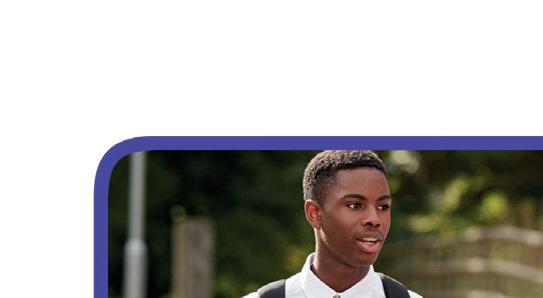








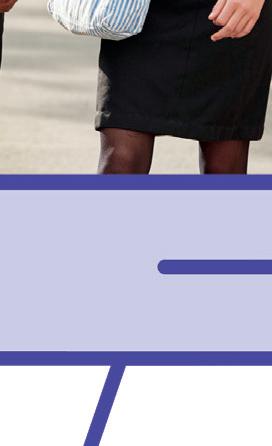




Personalised
Digital Prospectus
Open Events
Event Follow Up
Staff Recruitment


“This is the future of school admissions.”
UK boarding school
Agent tool
Register to watch a demo
Personalised school admissions and recruitment
kampus24.com
Navigating Motherhood in an International School: Striking a Balance Amid Cultural Differences
by Heather Meyer and Hailey Meyer
Motherhood is a universal, lifechanging journey. For mothers working at international schools all over the world, it comes with its own set of challenges. Balancing the demands of international school employment, adapting to the host country’s cultural norms and taking on new personal responsibilities are complex life adjustments. Returning to the workplace after maternity leave is an experience that is often underestimated as one that has a dramatic impact on the mother’s health and wellbeing. We argue that this oversight is likely due to limited representation in female senior leadership in international schools around the world (Bunnell & Gardner-McTaggart, 2022). In a profession where burnout is becoming more prevalent than ever (Cunningham, 2022), it is essential for international school leaders to be aware of the complexities associated with the experience of becoming a mother while living and working abroad – particularly in relation to the tensions that may be
culture has changed. We will outline barriers for new mothers integrating back into their international school role, and how school leaders can address these, in order better to support this significant transition.
A Cultural Conundrum
International schools are uniquely positioned to act as cultural brokers to support staff returning from maternity leave. This is because host country customs surrounding the responsibilities associated with motherhood can often clash with the expectations, ethos, work policies and/or (work) culture of the international school. There are many examples of such tensions, each dependent of course on the local context in which the international school operates in the world. In many countries, the local society and infrastructure takes the position that mothers should adapt their work life to support and prioritise their new/growing family, and they are offered opportunities for part-time work and flexible schedules to accommodate
Returning to the workplace after maternity leave is an experience that is often underestimated
present between the international school and the local infrastructure, availability of local resources, and local cultural norms around motherhood – and to create robust support systems to facilitate a smooth transition for female staff returning to work from maternity leave.
In this article, we explore what international schools are doing to ensure they are up-to-date on societal changes in a post-pandemic world where working
this expectation (Hosseini et al, 2023; Pailhé et al, 2020): a position which may clash with expectations in international school work spaces. Such discordance between local and international school views on motherhood can require a balancing act for both expatriate and local mothers employed by international schools, who may find themselves torn between two contrasting sets of expectations.
Compassion, Wellbeing and Burnout
We know there is a high level of burnout among women returning to the workforce after maternity leave (see, eg, Kokubo et al, 2023). The dual pressure of re-adjusting to the demands of work and managing new family responsibilities while navigating different cultural norms around raising children can take a toll on mental and emotional wellbeing, especially when living abroad without an extended family support system available. To reflect the emphasis international schools place on compassionate education involving student agency and ownership in experiencing school life, school leaders can take similar approaches in supporting returning mothers by offering choices. This could relieve some of the pressure and give the mother some ownership over how she can best adapt and transition back into her role, and ultimately positively contribute to and experience her work environment.
One critical aspect that deserves attention is the flexibility in working times offered by international schools to accommodate the diverse needs of their employees. Our post-pandemic working culture has changed (Chan et al, 2023) and this needs to be recognised and built upon. One example of the benefits of flexible working hours is increased access to local childcare, if the international school does not provide this benefit.
A mother support group for staff within international schools can also offer invaluable encouragement in the transition back to work. This group could serve as a place where mothers (often navigating parenthood far from their extended families) can share experiences, exchange parenting tips, provide emotional support,
32 | International School | Spring 2024
From the Schools
and discuss challenges around navigating the intersection of local and international perspectives on parenting, which in turn could provide a smoother integration into the local/expatriate community for mothers (and their children). In essence, such groups empower mothers, foster a sense of belonging, and contribute to the holistic wellbeing of the entire international school community.
Some Suggestions for Consideration
On the basis of the points raised above, we have compiled a list of ideas for international school leaders to consider in supporting women returning to work after maternity leave:
1. Open Communication
Foster an open and supportive communication channel. Encourage returning mothers to discuss their needs, concerns, and expectations regarding their return to work.
2. Awareness of Local Culture and Infrastructure
Gain an in-depth understanding of the nuances of local culture, resources and elements of the host society’s infrastructure that will impact a new mother’s ability to balance her changing family and work responsibilities.
3. Flexible Schedules
Consider offering flexible work hours or remote work options – at least temporarily – and be open to discussing part-time arrangements or gradual return plans.
4. Lactation Support
Provide a private and comfortable space for breastfeeding or expressing milk. Ensure that mothers have access to a clean and well-equipped lactation room.
5. Buddy/Support System
Provide mentorship or assign a buddy to help returning mothers navigate any changes in the workplace and to catch up on new developments.
6. Awareness of Constraints New Mothers Experience
This includes respecting personal time; discouraging excessive overtime work; planning for purposeful inperson staff meetings.
7. Employee Assistance Programmes
Offer access to employee assistance programmes that provide counselling or support services. Returning mothers may face emotional challenges, and having resources available can be invaluable.
8. Professional Development Opportunities
This includes sector-wide initiatives to encourage school-to-school peer networks; conferences, talks, workshops and other professional growth opportunities for new mothers. This is essential, as they are likely expected to catch up on new developments in their field upon their return.
9. Celebration of Milestones
Celebrate the return of employees after maternity leave. This can include a ‘welcome back’ event, an acknowledgement in a staff meeting, or a small gesture to make them feel appreciated and valued.
10. A Supportive Culture
Foster a workplace culture that is supportive of working parents. This includes creating awareness and sensitivity among colleagues to the challenges faced by returning mothers.
11. Keeping-in-Touch Days
Provide a certain number of paid workdays as an option for mothers if they would like to touch base with colleagues, attend staff meetings or participate in work life while they are on maternity leave.
As noted, navigating motherhood while working at an international school is a complex journey, influenced by myriad factors including cultural differences, workplace policies and societal expectations. By fostering a culture of understanding, and implementing compassionate policies that support work-life balance, international schools can create environments where mothers may thrive both professionally and personally. It is essential for educators, administrators and policymakers to collaborate in shaping a future where the challenges of motherhood in international schools are continually acknowledged and met with practical solutions and empathy. ◆

Reference
• Bunnell T & Gardner-McTaggart A (2022)
The cultural capital of senior leaders in elite traditional international schools: an enduring leadership ‘nobility’? International Journal of Leadership in Education. 1-19.
• Chan X W, Shang S, Brough P, Wilkinson A & Lu C Q (2023) Work, Life and COVID-19: a rapid review and practical recommendations for the post-pandemic workplace. Asia Pacific Journal of Human Resources. 61(2): 257-276.
• Cunningham N (2022) Wellbeing of Private School Teachers in International School Settings MA Thesis. Tampere University of Applied Sciences. Available at: https://www.theseus.fi/ bitstream/handle/10024/785341/Cunningham_ Neil.pdf?sequence=3
• Hosseini Z, Yarelahi M, Rahimi S F, Salmani F (2023) Investigating the Factors Related to Work-Family Conflicts Experienced by Working Women: A Systematic Review. Health Scope 12(1): 1-11.
• Kokubo A, Yoshikawa K & Wu C-H (2023) Facilitating Transition from Maternity Leave to Work for Working Mothers: A self-efficacy intervention study. Cambridge Prisms: Global Mental Health. 10: 1–11.
• Pailhé A, Solaz A & Stanfors M (2020) The Great Convergence? Gender and Unpaid Work in Europe and the United States. Available at: https://hal.science/hal-02537017/file/
LPED_2020_1.pdf
Heather Meyer is an Associate Professor at the University of Warwick, UK
✉ heather.meyer@warwick.ac.uk
Hailey Meyer is a PYP teacher at an international school
✉ haileymeyer12@gmail.com
Both are new mothers who have returned to teaching after taking maternity leave.
Spring 2024 | International School | 33
From the Schools
The Importance of Resilience
by Kieran Pearson
Life begins at the end of your comfort zone. I will always stand by that statement. However, to be able to thrive in a life outside your comfort zone, you first must be resilient. You see, I will never claim to be the smartest person in the room, but I do know a thing or two about the importance of resilience in life. Sometimes we need to endure hardship in order to grow as people. Enduring hardship can be a positive experience, as long as you have the right mindset, a resilient mindset.
As a former British Commando, the path I walked on my journey to becoming an educator has been different to most. Being an elite Royal Marine Commando in the British military is an experience that not only forces you out of your comfort zone regularly, but also keeps you there for long extended periods. These periods of hardship and discomfort can last hours, days, weeks or even months at a time.
The process and journey of becoming a commando is long and arduous, and most won't make it to the finish line. Everyone who starts the commando training programme is deemed fit enough to pass the

course; the rigorous selection process ensures that. So, why do most fail? What is it that the few possess, that the majority don't? The answer? Mental fortitude and a deep reserve of resilience.
My time as a commando taught me excellence, self-discipline, courage, determination and even cheerfulness in the face of adversity. But, above all else, it taught me how to be resilient. I didn’t know it at the time, but my experience serving as a commando was shaping me into the future teacher I would become. Although a commando unit and a school seem like they would have nothing in common, I find that they share a lot of the same ethos and values, albeit our missions are slightly different. I will forever be grateful for my time in the military as it equipped me with the tools and skills I would need for my new life in education.
My role as Head of Outdoor Adventure and Environmental Learning at Robert College in Istanbul means I have the great privilege of helping shape the next generation of young people ready for an everchanging, challenging and fast-paced world. Part of my role, and arguably the most exciting and rewarding part, is creating experiences for our students filled with adventure, challenge, learning and lots of personal growth opportunities. In order to achieve such an experience, we need to take students on a journey of self-discovery. These journeys come in many shapes and forms, and are purposely filled with challenging situations by design. Our trips and expeditions will almost always include some level of individual or collective hardship, as I feel these are the moments when students discover the most about themselves. Students almost always look back and cite these tough moments as the most transformative, and the moments when they realised they are capable of more than they believed.
The passage below is an extract from a reflection written by one of our students who completed a recent expedition to Fethiye in the southwest of Türkiye. The main focus of the expedition was to complete sections of the famous Lycian Way longdistance hiking trail.
‘Our expedition to Fethiye changed us in ways we had not expected. When we first arrived on day one, the conditions were harsh and when we went hiking for the first time, we realized it was much harder than we had anticipated. Honestly, at some point we thought we wouldn’t make it to the end. However,
Schools
From the
when we reached the top at the end of our first hike, the view was so spectacular that we thought the struggle was worth it. That was our motivation to keep going for the rest of the expedition. We knew that all of our effort would be worth it once we reached our goal. And we were right. We faced challenges we never thought we could, from 15 km hikes to cooking our own fish that we cleaned with our bare hands. But the end result was always worth it, whether it be the view, the food we ate, or the feeling of accomplishment it brought. We have expanded our leadership skills greatly thanks to the challenges we had to face as a team. We made great friends, and had an amazing time at nights when we lit up the campfire and ate marshmallows together. Overall, this experience was really worth the hardships, because we grew as people and became much more resilient. We learned that most hardships are worth enduring and we
Life begins at the end of your comfort zone.
experienced fabulous things that we wouldn’t have been able to in our daily lives.’
During this same expedition, students also took part in a survival scenario where they were led to believe that they were stuck on a remote beach and could not be rescued by boat for 24 hours. This is known as dislocation of expectation, where an individual or group is taken from an environment in which they are comfortable and relaxed, and suddenly plunged into a situation far removed from their comfort zone to see how they will react. Safe to say our students passed the test, and this ended up being a real highlight of the expedition for me personally, as students showed plenty of resilience and came together to put all their new-gained skills and knowledge into practice to build shelters and fires, and even prepare and cook fish caught from the sea.
Resilience is important for every generation, but it holds particular importance for today's young people. The world is changing at a rate never seen before, whether that be thanks to technology or to our climate. Life is complex, and although resilience on its own cannot, and will not, solve all your problems, it can empower you to navigate life's challenges. If I could give one piece of advice to young people today, it would be ‘Be Resilient’.
At Robert College, we welcome the opportunity to collaborate with international colleagues. Please feel free to contact me if you would like to know more about the work we are doing with our Outdoor Adventure and Environmental Learning Program. ◆
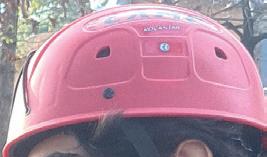
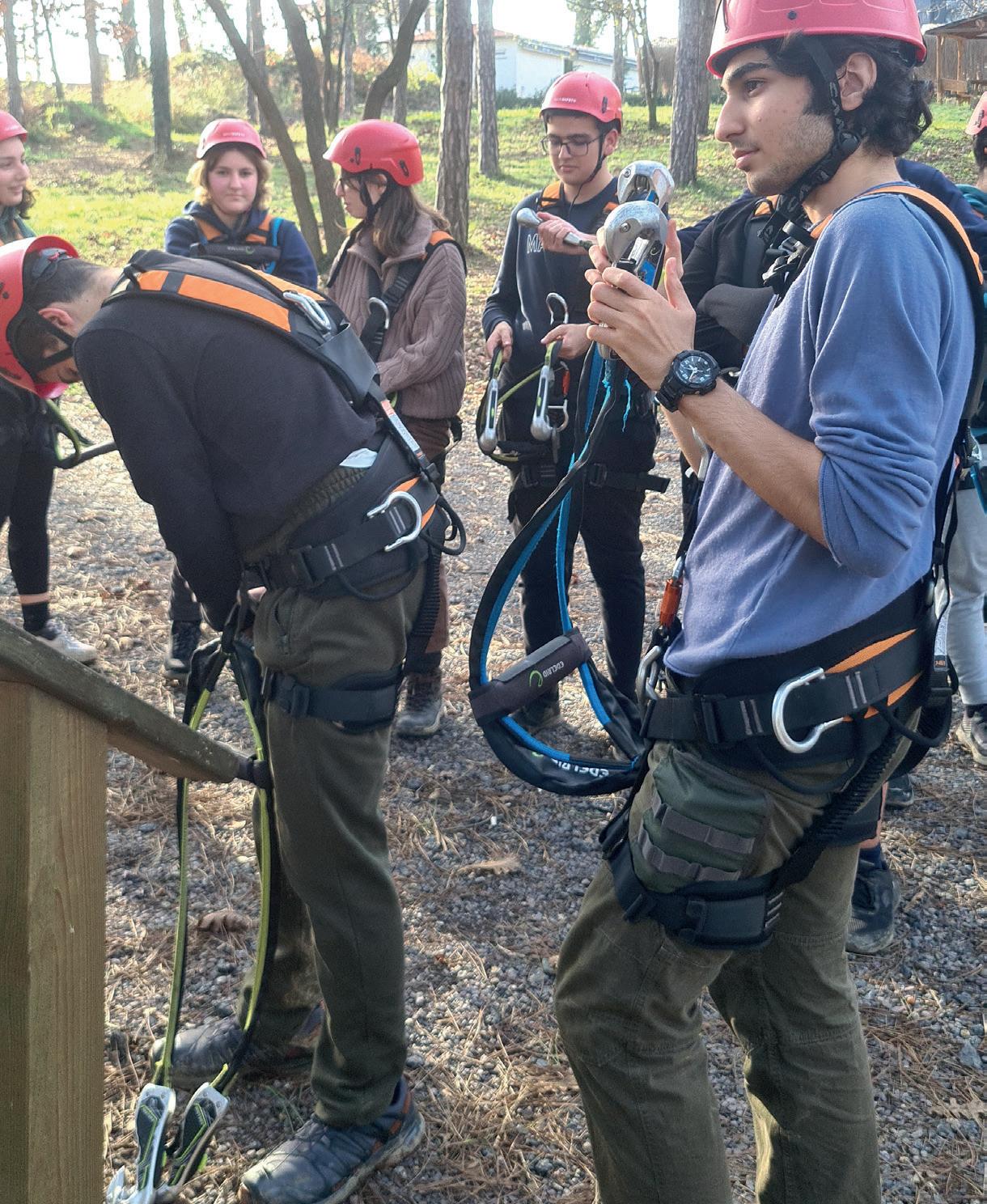

✉ kpearson@robcol.k12.tr
Spring 2024 | International School | 35
Kieran Pearson is Head of Outdoor Adventure and Environmental Learning, and Teacher of PE at Robert College Istanbul.
From the Schools
Beyond Character Education: Integrating Skills from the Inner Development Goals into the English Classroom
by Allison Finn Yemez
Humanity is facing a fork: we can go to the left toward mutually assured destruction – ourselves and the Earth together – or we can go right, toward mutually assured thriving. This is what Indy Johar told us on the second day of last year’s Inner Development Goals (IDG) Summit, right before he reminded us that, if we continue the way we are going now, our children may not have an Earth to inherit. I walked away from that summit choosing to turn right and knowing how powerful my position in the classroom is to shape the direction of the future. For my own children and the youth in my classroom, I have committed myself to the deliberate teaching not only of critical, creative, and metacognitive thinking skills, but also the intentional inner development that leads to outer development: the IDG Framework [see Figure 1].
The challenge as I made this choice became the rebalancing of our school’s grade 10 English curriculum to integrate both content knowledge and skills as well as the five domains of inner development: Being, Thinking, Relating, Collaborating,
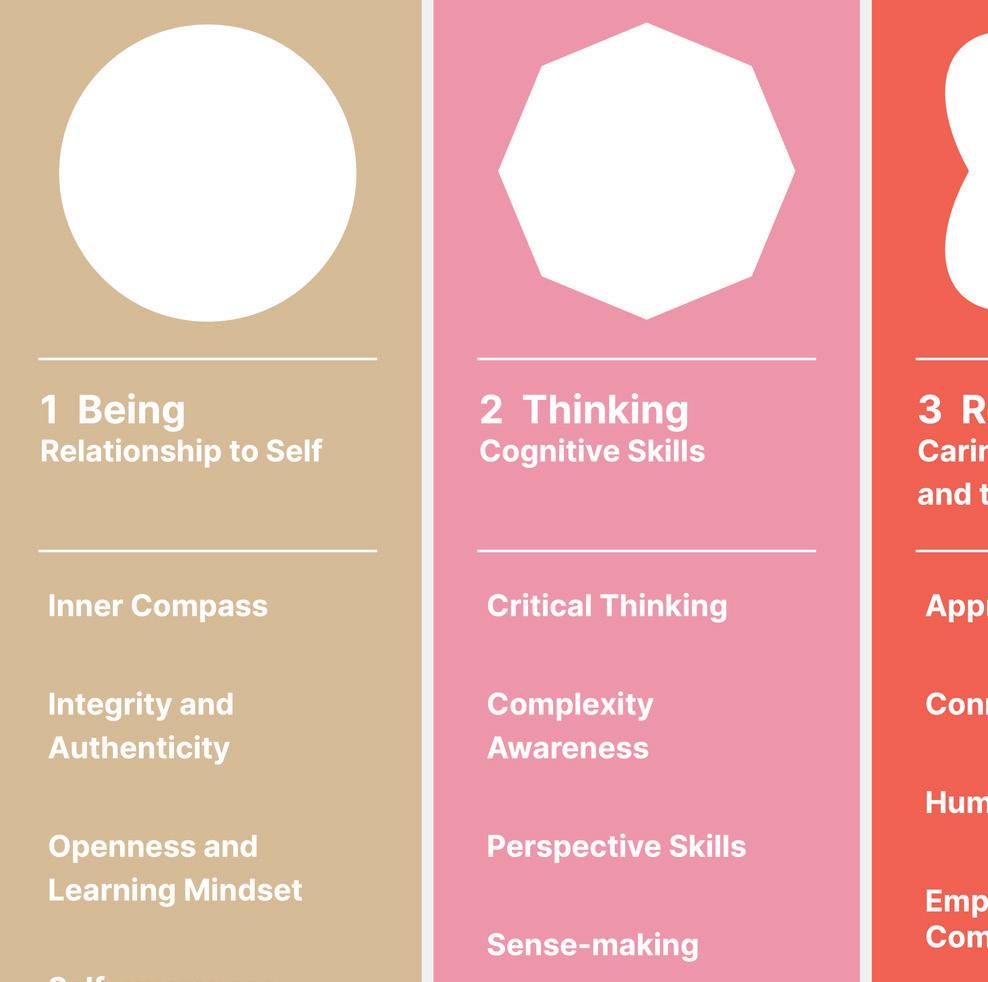
and Acting. This will be a lengthy journey, but it is one that is important enough to merit our full attention. And since students in schools spend the bulk of their time in the classroom, it is the crucial work of the classroom teacher to establish and emphasize this imperative to secure our mutual thriving.
So, the first thing I did at the very start of this year was introduce my students to a vision of education for the future which was inspired by the book So What Now? Time for Learning in your School to Face the Future by Malcolm Groves and John West-Burnham, as well as sources such as the World Economic Forum’s Future of Jobs report and current research into teaching and learning [see Figure 2]. At the center of our learning in English class is reading and analyzing literature and rhetoric as well as developing the confidence and the voice to create arguments of our own. For this we start by building content knowledge, learning to draw logical conclusions from well-chosen evidence, and applying all of these things to help us make meaning from the texts we read in class. In the process of doing this, we focus
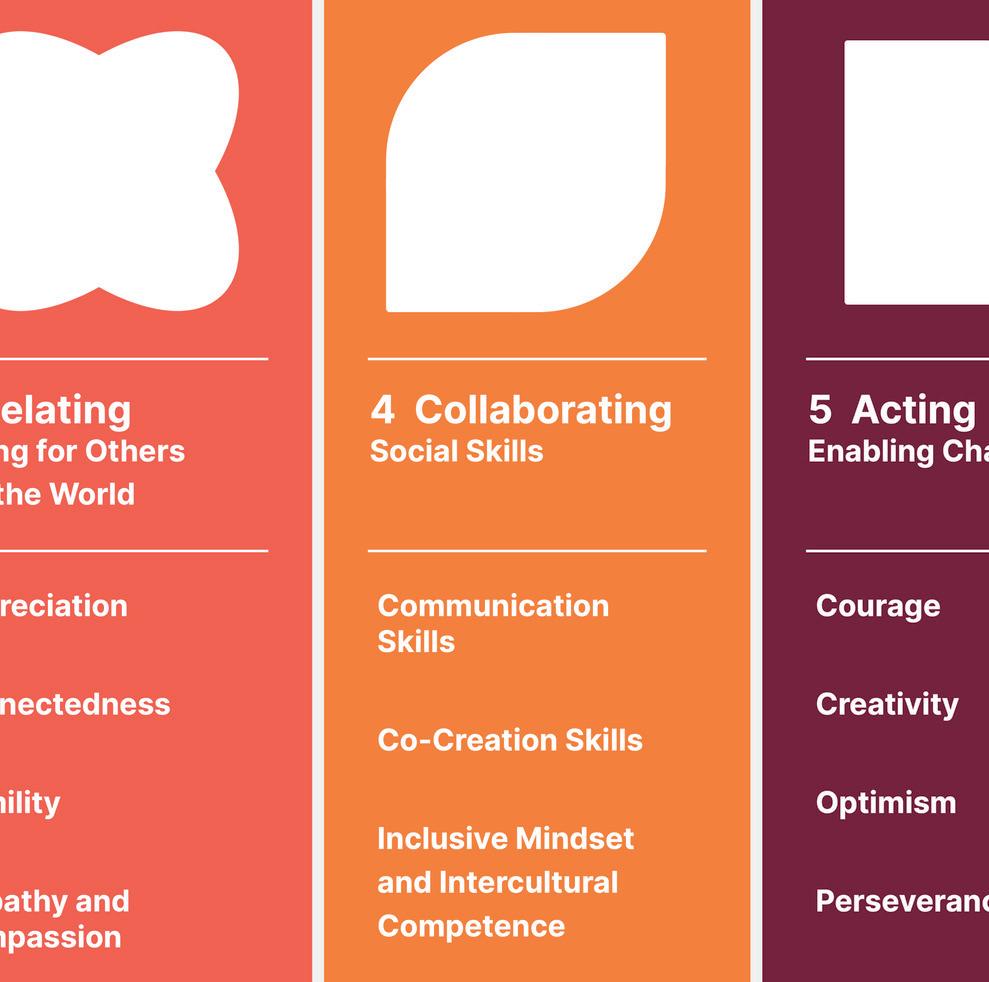
on Critical Thinking and Collaboration, parts of IDG Domain 2: Thinking, and Domain 4: Collaborating.
This knowledge-building and logical thinking was introduced to students through Margaret Atwood’s The Handmaid’s Tale and Shakespeare’s Macbeth. A few other texts supplemented this reading and provided opportunities to deepen critical understanding of each: among other things, the students read Adam and Eve and the Fall of Man from Genesis book 2, Kant’s What is Enlightenment, The Allegory of the Cave by Sophocles, and Swift’s A Modest Proposal To process the connections between the supplemental and central texts, students engaged with another skill on the IDG framework: collaboration, establishing the trust they needed for vulnerability and focusing on listening and communicating as they applied their new knowledge to both The Handmaid’s Tale and Macbeth (see Figure 3).

Next, the students engaged in a translation activity of the entire framework which asked them to deeply examine the given English phrasing and to find the equivalent word or phrase in Turkish, their native language. This prompted them to think deeply about the intention of each listed skill and to consider how they might best communicate that intention. It was the conversation itself that was important, of course, and it indeed yielded interesting conversations: for example, one group discussed whether they should translate ‘inner compass’ literally to ‘iç pusula’, which has little to no meaning in Turkish, or if they should choose something like ‘andıkçı’, a word that is completely different but that deals with memory and value.
36 | International School | Spring 2024
From the Schools
Figure 1: Framework for inner development, created by Inner Development Goals (innerdevelopmentgoals.org).
From the Schools


In class we have been digging into the different words and phrases in order to deepen our understanding of the framework, and the one which has been most problematic for the students so far is ‘complexity awareness’ under Domain 2: Thinking. For this reason, in the second half of the school year I will challenge students to solve a real world problem that requires application of knowledge as well as all of the skills on the IDG framework. I will provide them with a case study for examination, and over the course of the semester we will read different texts that shed some light on different and complex elements of the case.
In a short, timed writing assignment, students were asked to synthesize the related texts they’ve read so far, and the
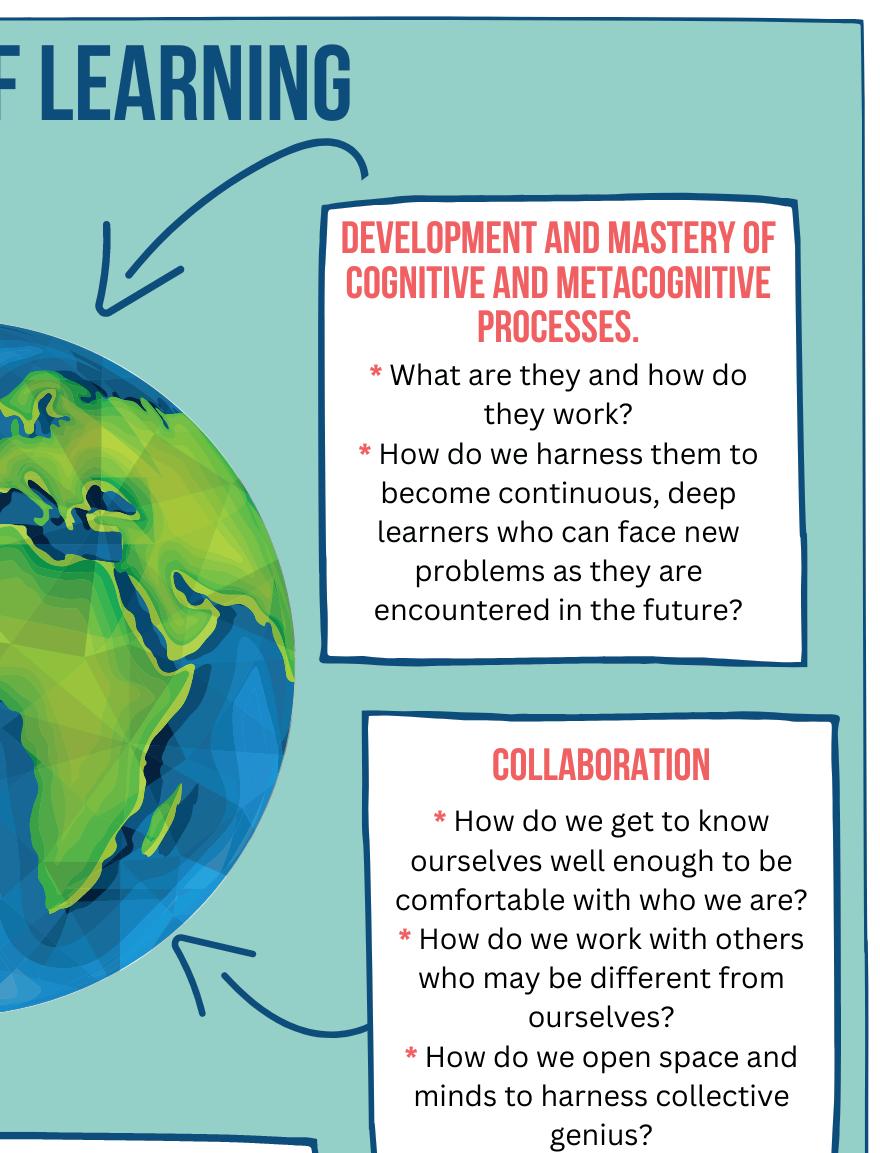

writing reveals an overwhelming focus on the skills of ‘inclusive mindset and intercultural competence’ and ‘empathy and compassion’. Many of the responses said things such as ‘Humans are not built to live as individuals. We desire to communicate and connect with others. Being a part of a community has become even more important in our current world where everything is global … this possibility comes with responsibility of being a “global citizen”. The concept of the “single story” makes empathy and understanding, which are necessary to fulfill this responsibility, challenging’. Then there is this response: ‘We should see life from different eyes, mouths, and we should examine life from different windows’.
Integrating the IDG Framework into

Figure 2: My vision for the future of learning, inspired in large part by the latest research into what works, the work of Groves and WestBurnham, and the World Economic Forum’s Future of Jobs report.

the fabric of the classroom is, at its core, an effort to build community and connection, and to reinstate the role of wisdom in the curriculum. I am lucky to be an English teacher, as I can rely on the collective voice of storytellers to support the developing knowledge, skills, and wisdom of the students in my classroom. It is our responsibility, as classroom teachers, to intentionally craft a personal growth journey which will inspire students to turn right alongside us – to choose the mutual thriving of humanity and the Earth in a future that includes everyone. The IDG Framework provides an excellent avenue for travel. ◆
Reference
• Groves M and West-Burnham J (2022)
So What Now? Time for Learning in Your School to Face the Future. Woodbridge: John Catt Educational.
• World Economic Forum (2023) Future of Jobs Report 2023. Available from https://www3.weforum.org/docs/WEF_Future_ of_Jobs_2023.pdf
Allison Finn Yemez is an English Teacher and Head of Educational Research at Robert College, Istanbul, Turkey.
✉ afinn@robcol.k12.tr
Spring 2024 | International School | 37
Figure 3: Collaborative board work applying knowledge of Eden, light, darkness, heaven and hell to Macbeth.
Central
See the whole picture
A powerful reporting solution for intelligent, data-backed insights into your school’s performance
Central
Driven by Microsoft Power BI
iSAMS MIS
Utilise a range of user-friendly dashboards
Connect admissions data, student data, behavioural data, and more
Analyse your entire school within one system
Save your staff time and improve student outcomes

Analyse data trends and make informed decisions using industry-leading Power BI technology to support improved school outcomes.
www.isams.com
Any MIS
Integration with any MIS
Benefit from intuitive data visualisation
Empower data-backed decision making Power BI cloud-based technology for all schools
Benefit from a centralised platform and range of user friendly dashboards designed specifically for generating reports and extracting vital information from within your chosen MIS. Transform your school’s valuable data into actionable insights for improved school performance.
TEACHERS! How Not to Kill the Spirit In your ADHD Kids
Instead, Understand their Brains and Turbo-Charge our Future Leaders & Winners.
By Sarah Templeton
Gemini Publishing Ltd, 2022 | Reviewed by
Sally Hewlett
This is the author’s second book focused on ADHD and, as suggested by the title, this one is aimed specifically at all professionals working with children with ADHD, and especially teachers in the classroom. The stated objectives of the book are to provide information that will fill a perceived gap in training on ADHD and neurodiversity, and to raise awareness of how these conditions affect the thought processes of children and adolescents, thus providing an understanding of the resulting often-challenging behaviour and how to manage it.
The author begins the book by describing her own experiences and late diagnosis of ADHD in her 50’s. This is helpful to the reader because the author’s personal journey as described in the introduction provides a context to the autobiographical narrative style which is carried on throughout the rest of the book. The author also describes her experiences as a counsellor who has worked with adolescents with ADHD in the criminal justice system. This provides reassurance that the book is written from a position of practical and professional knowledge as well as personal experience.
The introduction and the next four chapters cover the author’s own lived experiences and provide an overview of ADHD traits, including positive attributes related to the condition and famous people known to have been diagnosed with it. It also provides a reminder that ADHD may be inherited or at least have familial tendencies, which means that teachers working with children with ADHD may also be working with parents or other related adults and siblings with traits of possibly undiagnosed ADHD. It
strongly makes the point, too, that each person with ADHD is different.
Chapter five reminds us that ADHD is often accompanied by other conditions such as any combination of dyslexia, dyscalculia, dyspraxia and dysgraphia. These and other co-occurring conditions are briefly described. Interestingly, the author describes these as ‘co-morbidities’ which is a historical term not generally used today in this context, but she also says that she prefers the term ‘coexisting’. One is left wondering why she doesn’t just use the more modern terms ‘coexisting’ or ‘cooccurring’ in the book.
The rest of the chapters are focused on the behaviours that teachers might be noticing in the classroom from children with diagnosed or undiagnosed ADHD, an explanation of why this behaviour is manifesting, and how to manage it in the form of ‘tips’ and ‘what works best’. The book is therefore designed to be an easy reference to quickly dip into for information, help and advice on a specific trait and, although there are over forty chapters, each one is very short and concise with useful descriptive labels such as ‘When they won’t stop fidgeting and can’t sit still’ and ‘When their procrastination is winding you up.’ There is also a useful blank page at the end of each chapter that the reader can use to write notes.
The wording of the extra-long title points to some language issues in the rest of the book which I found to be overly colloquial and even, after a while, mildly irritating. Nevertheless, it does make the writing easily accessible, and others may prefer the author’s informal style. I also found the publisher’s choices of putting ten pages of testimony at the beginning, and


not using chapter numbers or including an index, to be negative aspects of the book, particularly as it is designed to act as a quick reference point. The signposting to further reading on ADHD at the end of the book is especially useful, as is the glossary of terms.
Overall, in terms of value and usefulness, this book could helpfully be made available to teachers and other professionals in the workplace. It is a fast read if readers wish to go through it from start to finish, and a good reference to scan for specific advice on particular behaviour. Teachers and other professionals would find the content useful, regardless of prior knowledge and experience, because it is comprehensive yet concise, and therefore provides a useful reminder and reference to the complexities associated with ADHD. ◆
Dr Sally Hewlett is a researcher at the University of Bath, UK, with research interests in disability in higher education and a background in post-sixteen special education.
Spring 2024 | International School | 39
Book Review










your expertise to the next level
a Masters degree with Real Training!
Testing & Assessment
Educational Leadership
Care
and Inclusion
realtraining co uk Join us this May >
Take
Achieve
Autism Educational
Inclusive
Pastoral
SEND
www
Our flexible, online programmes allow you to develop advanced skills and knowledge in topics including:
































































































































































































































